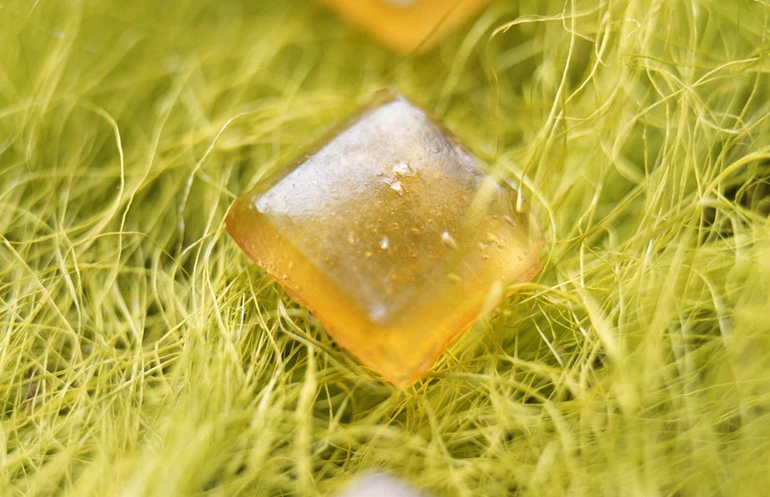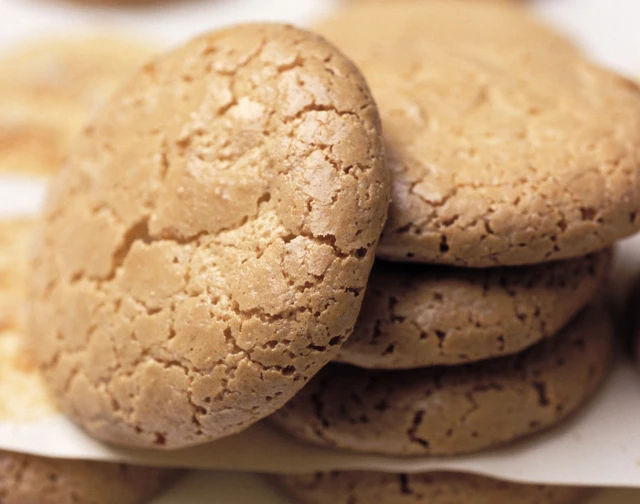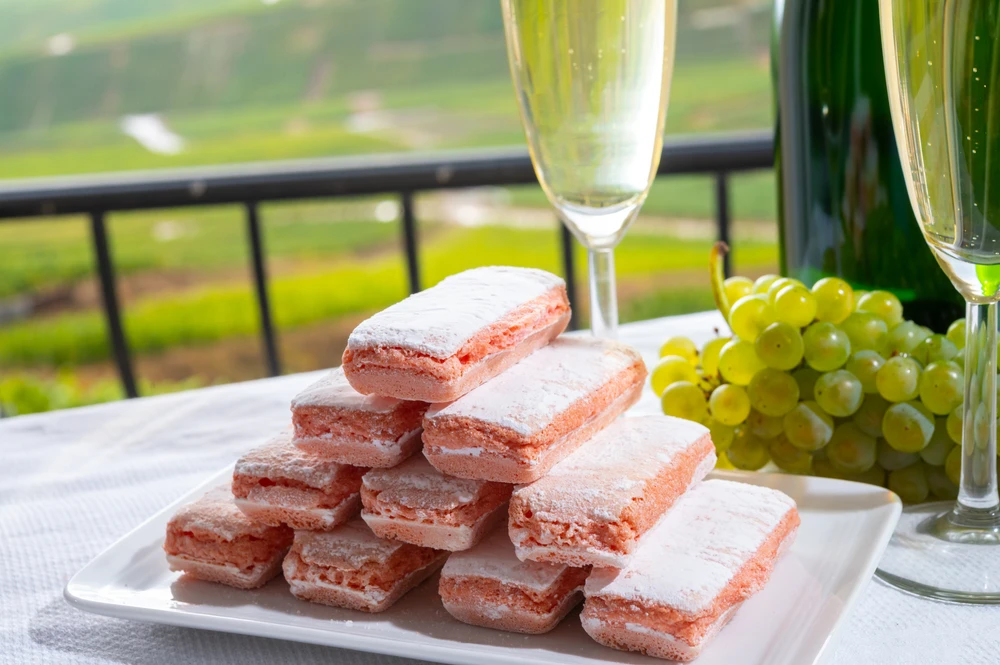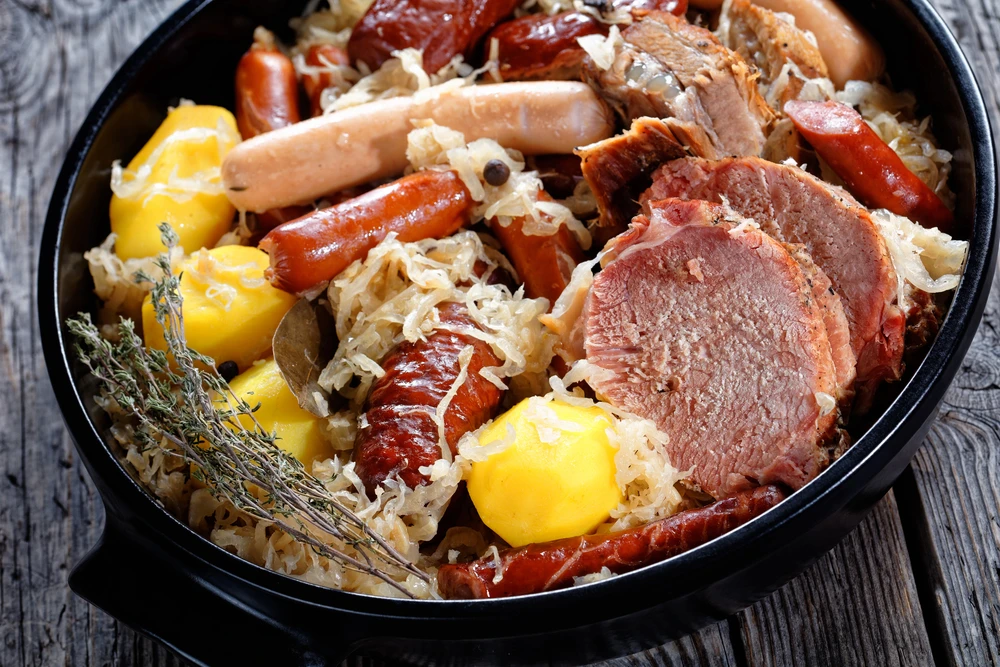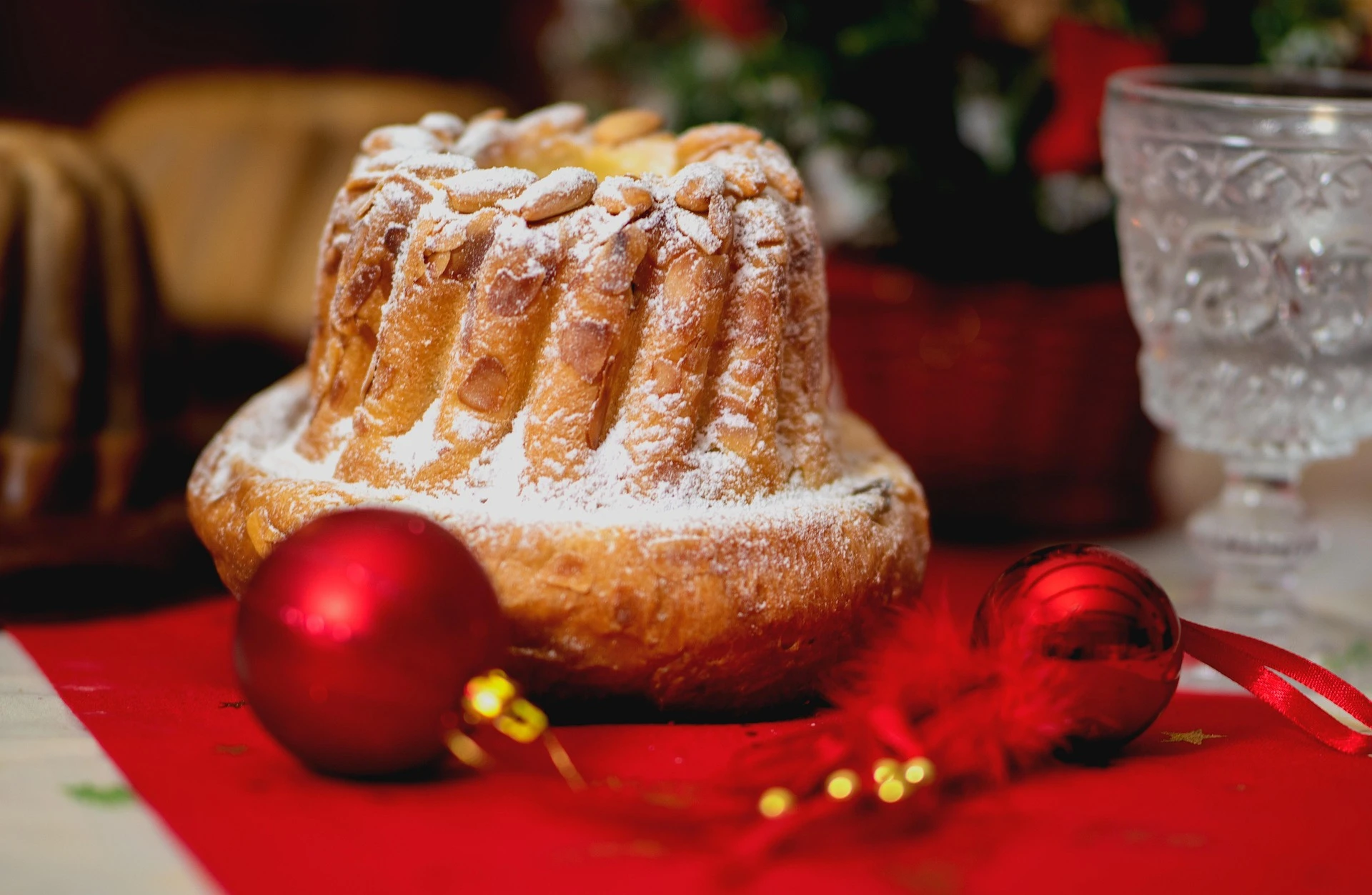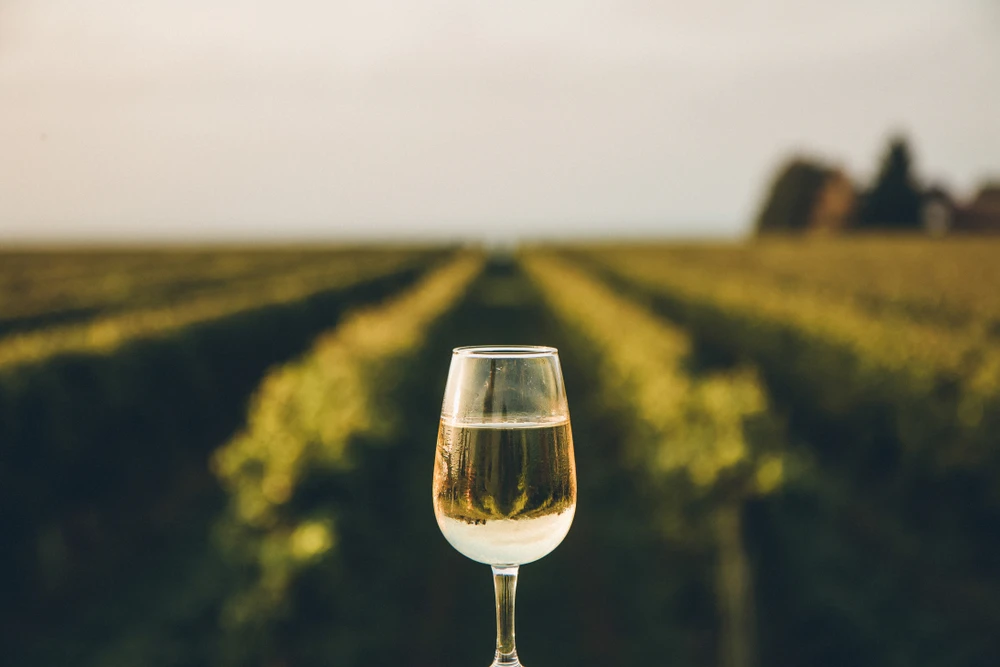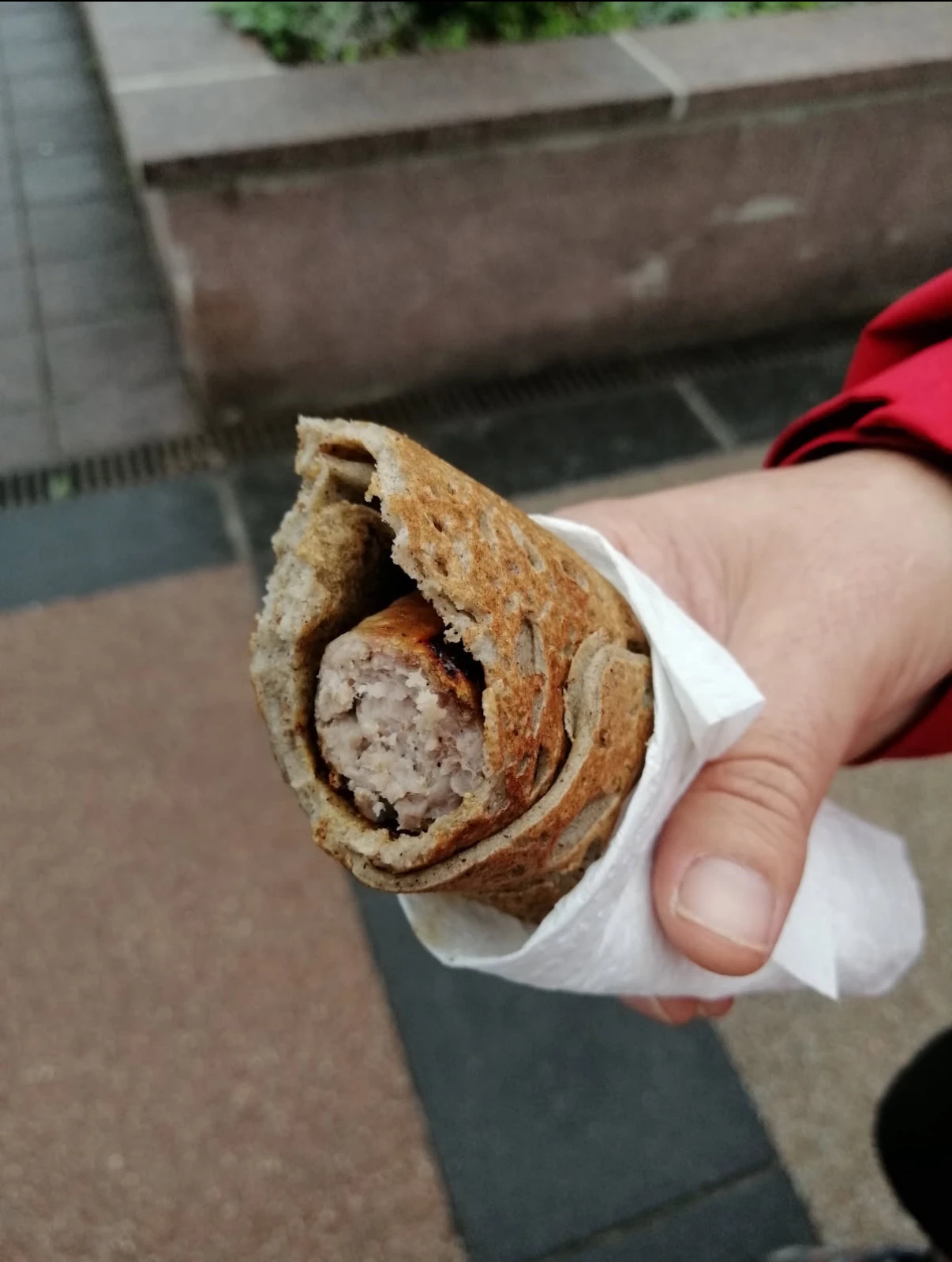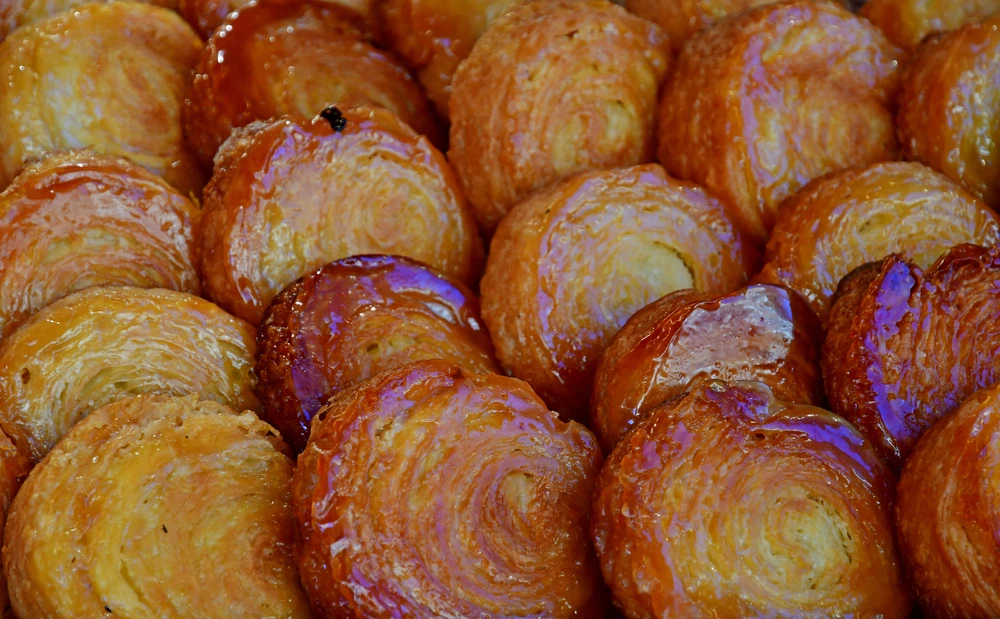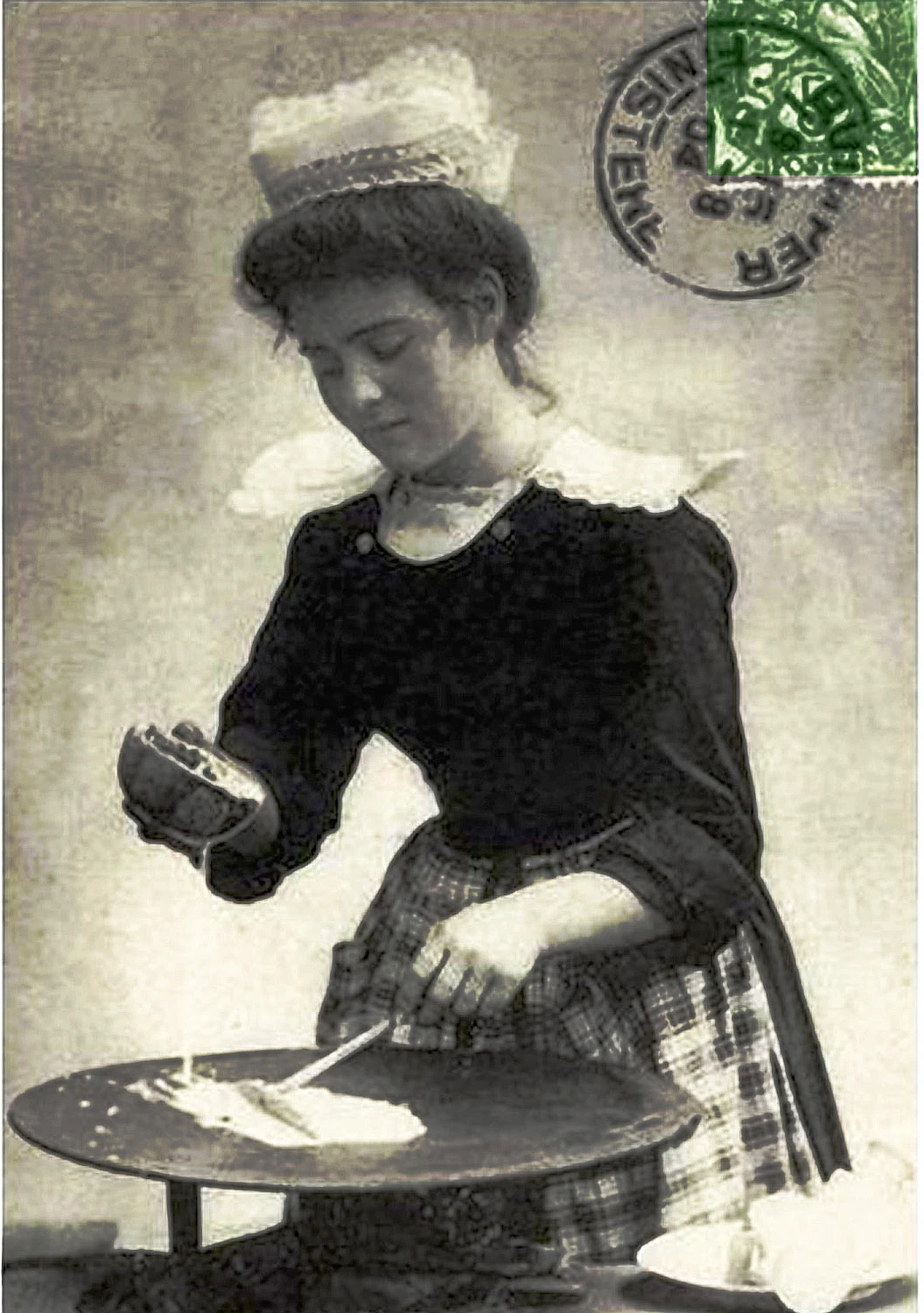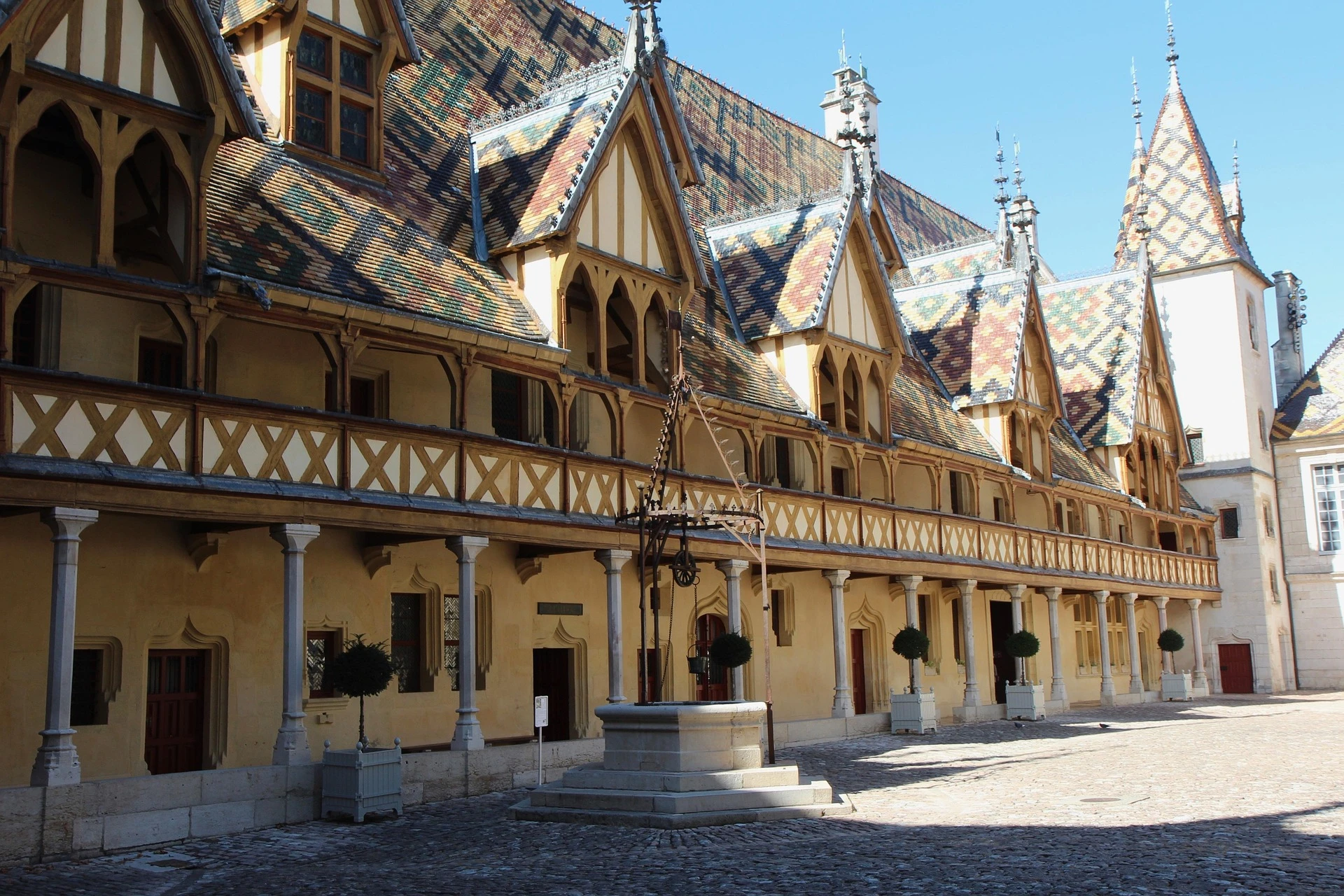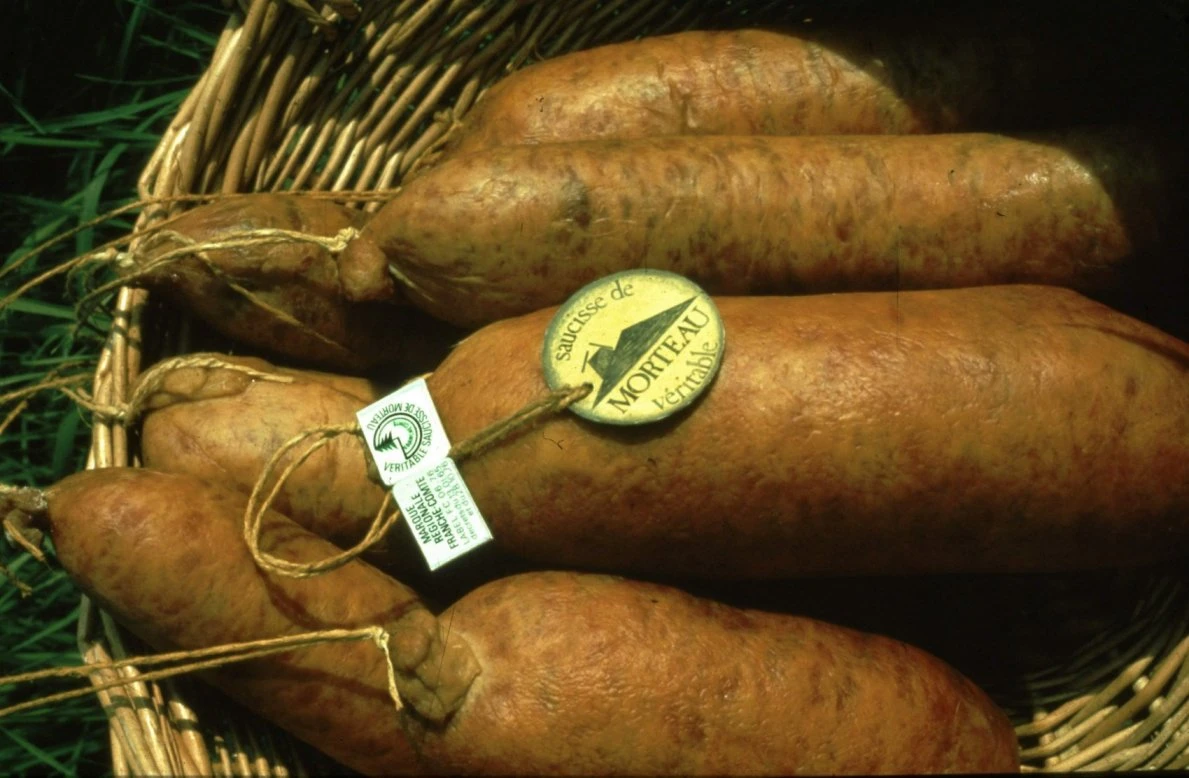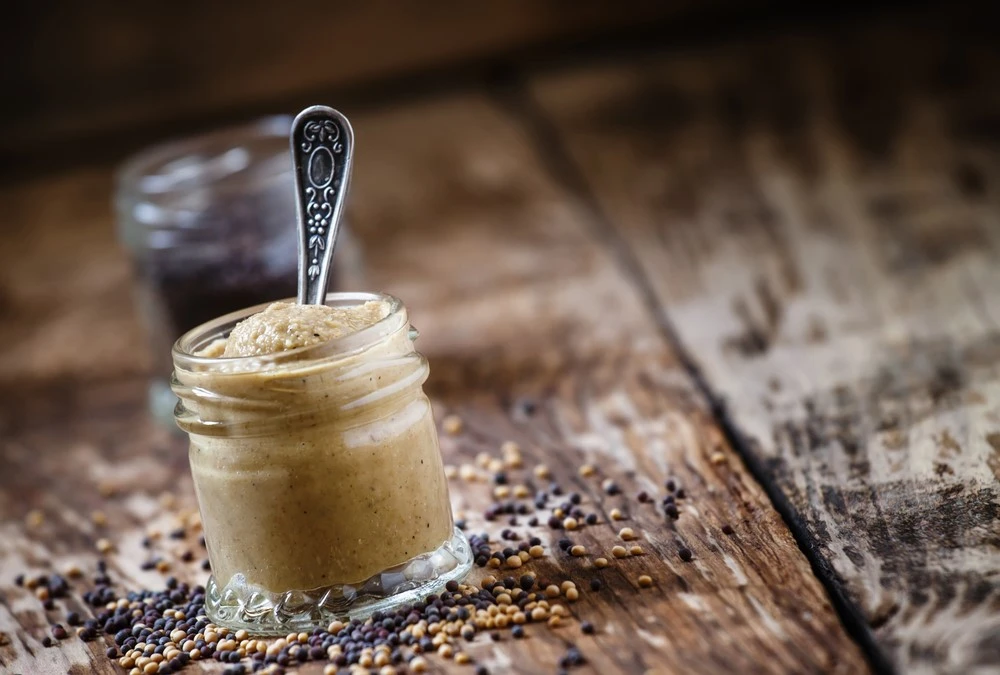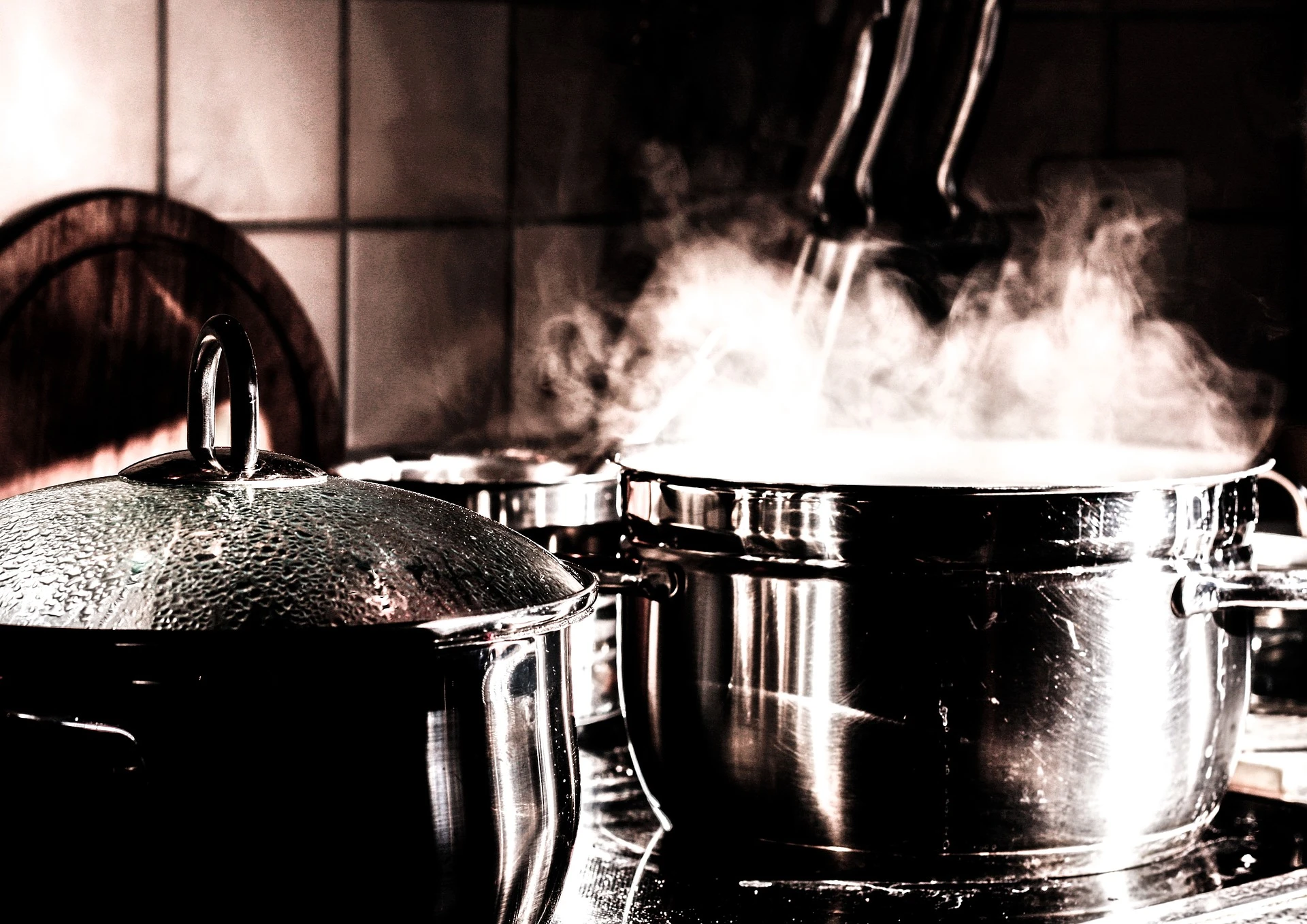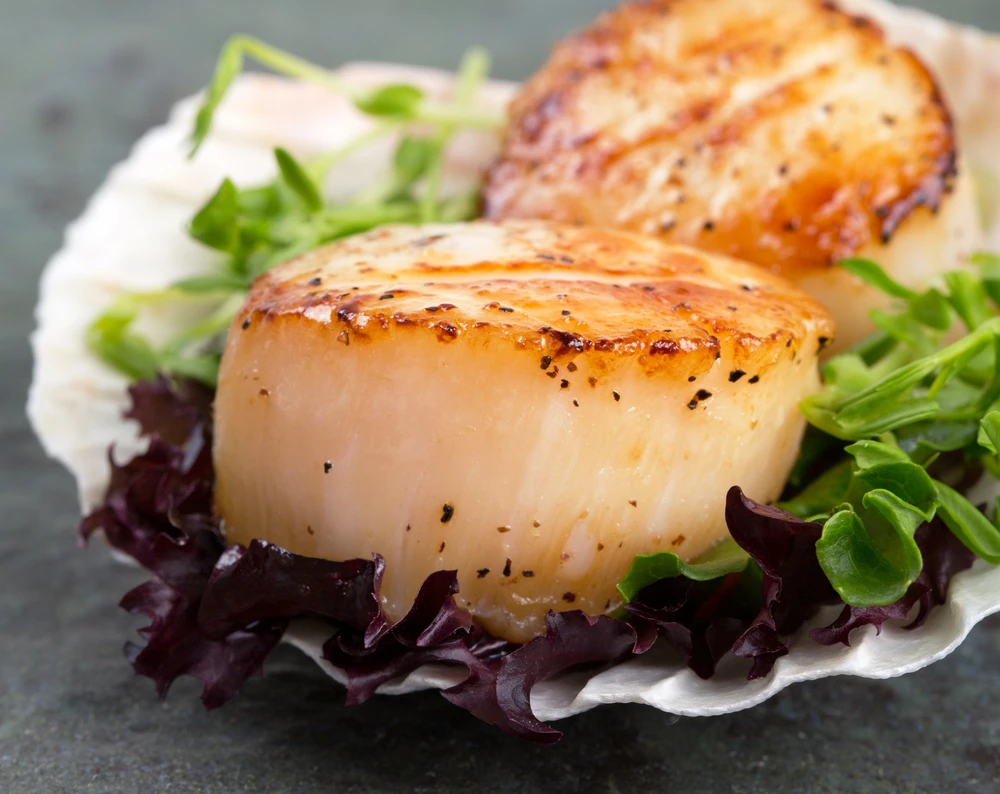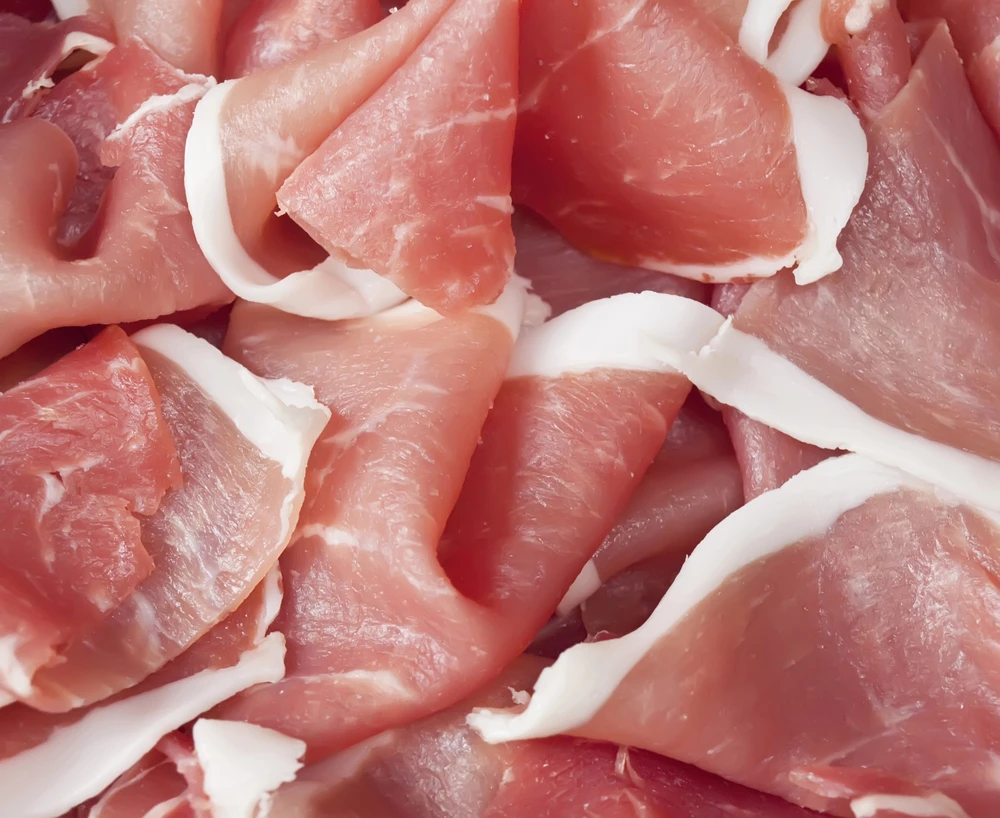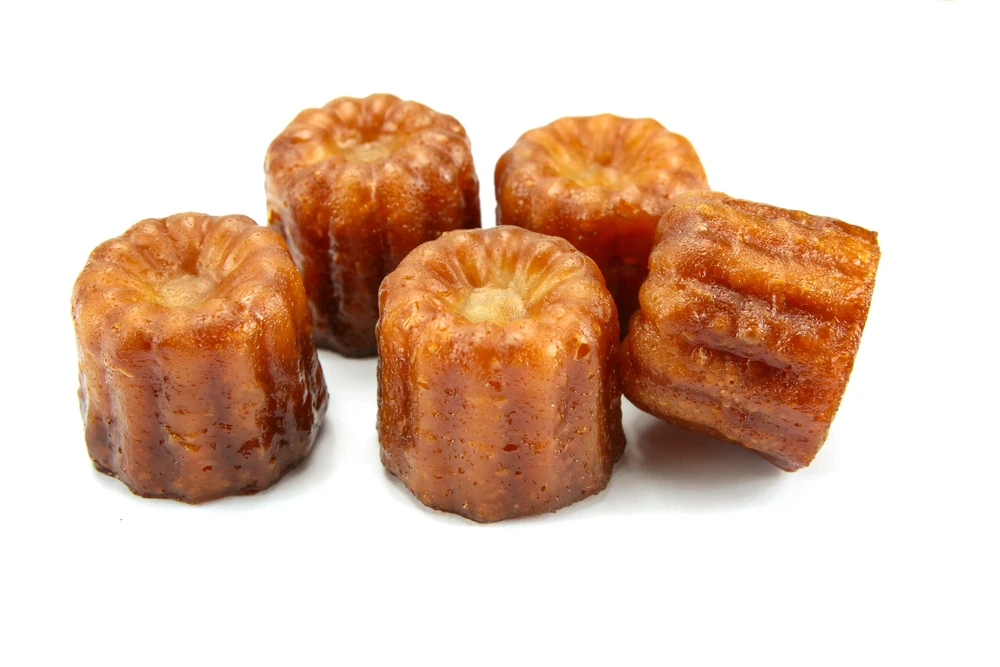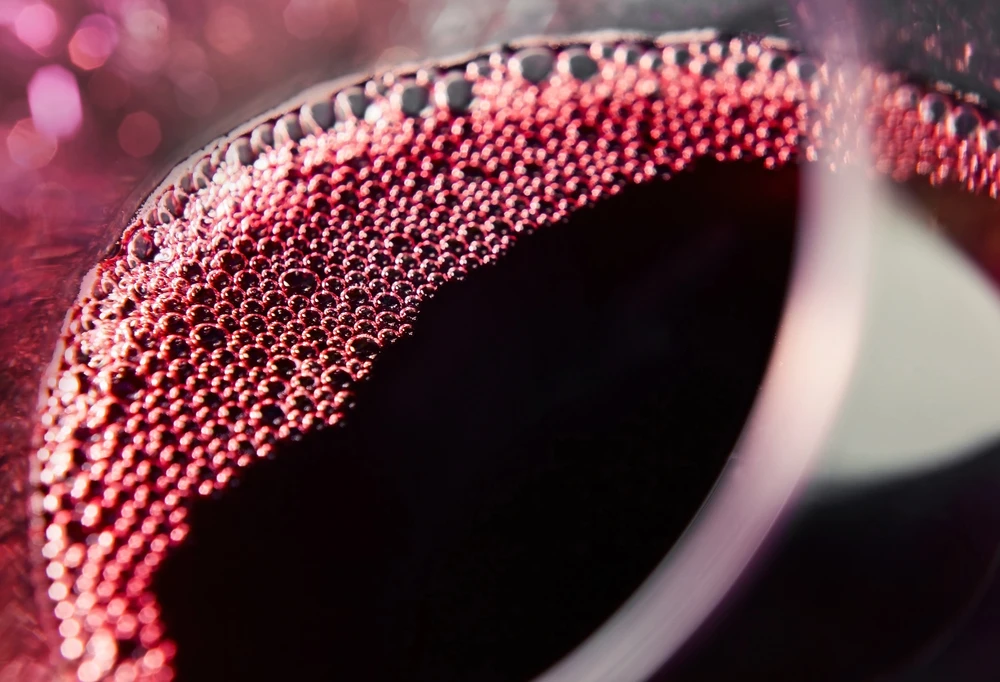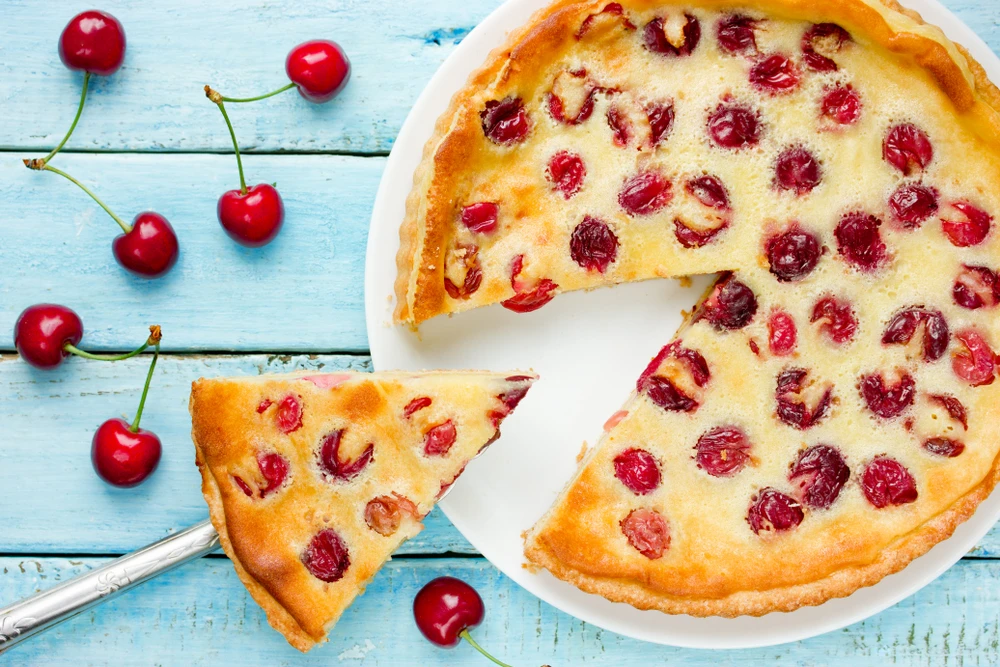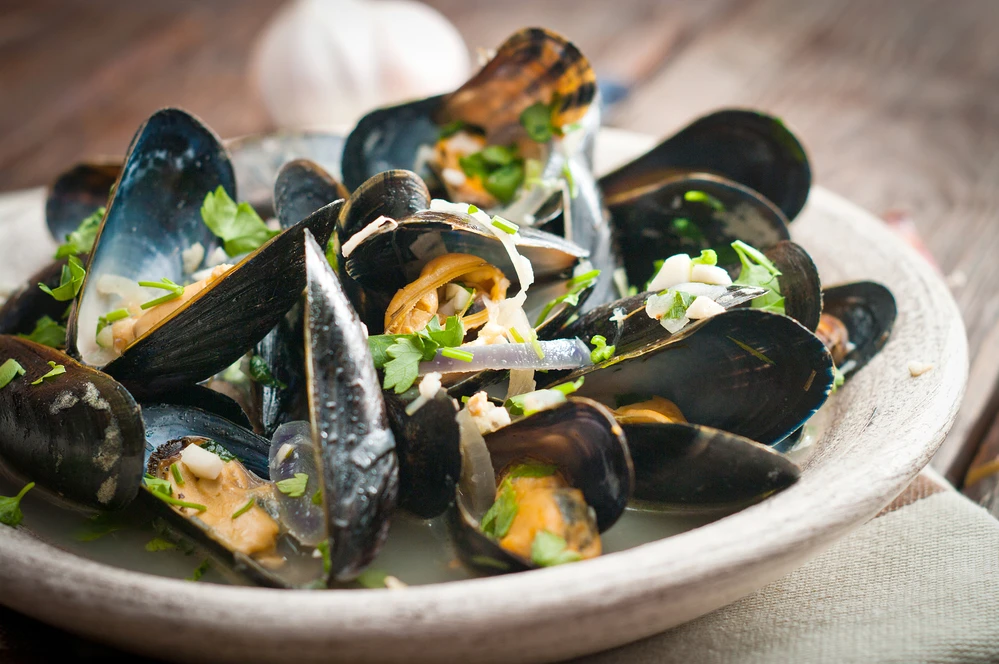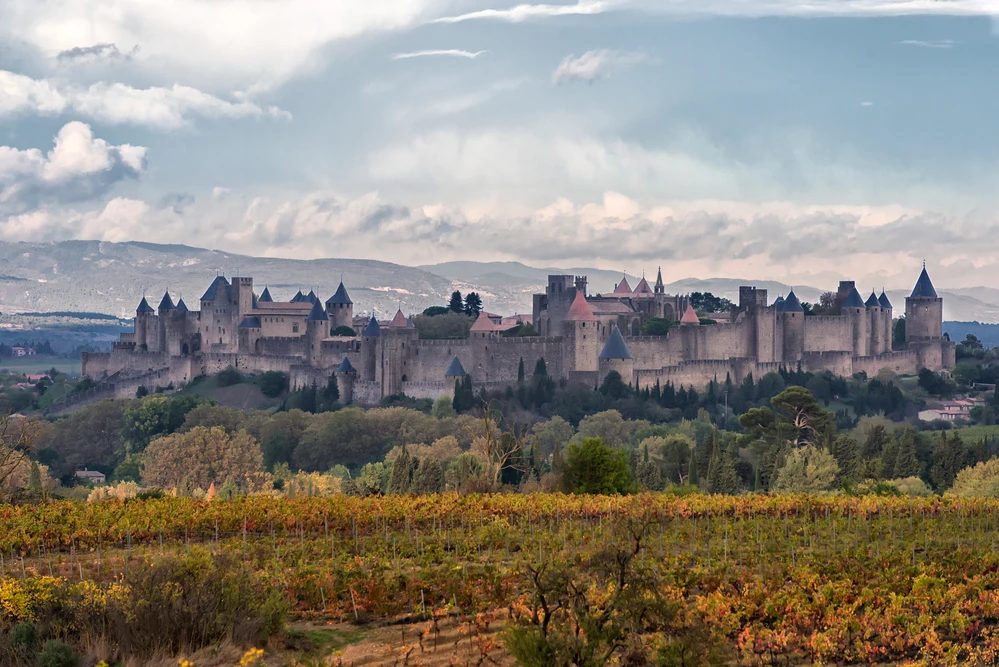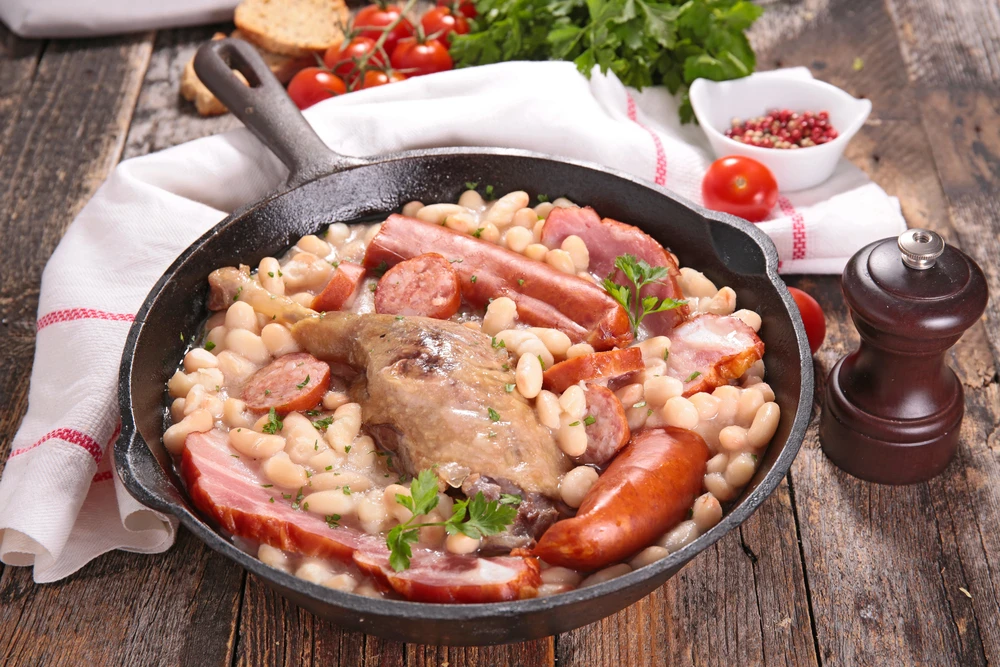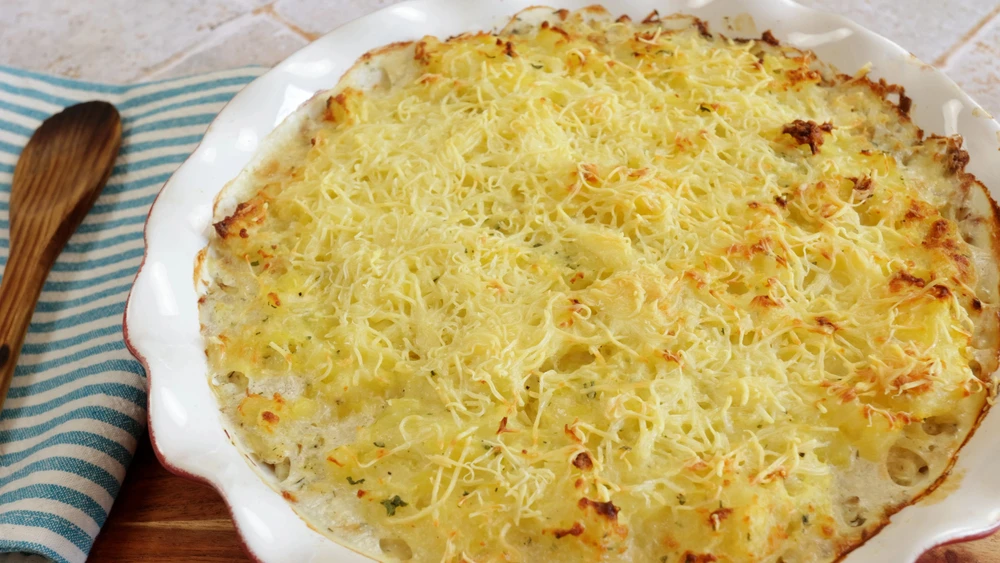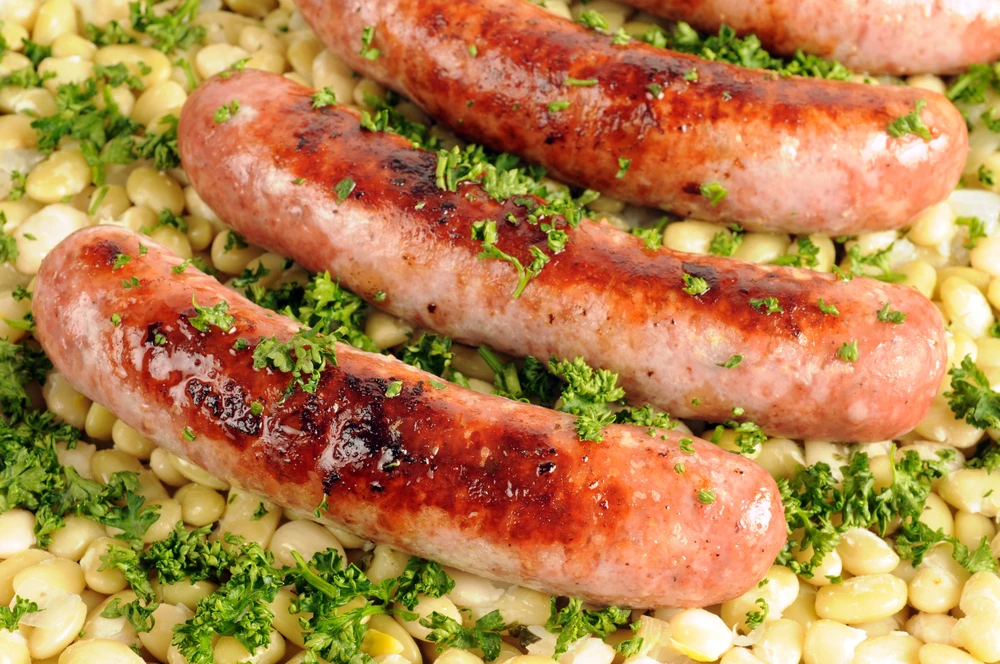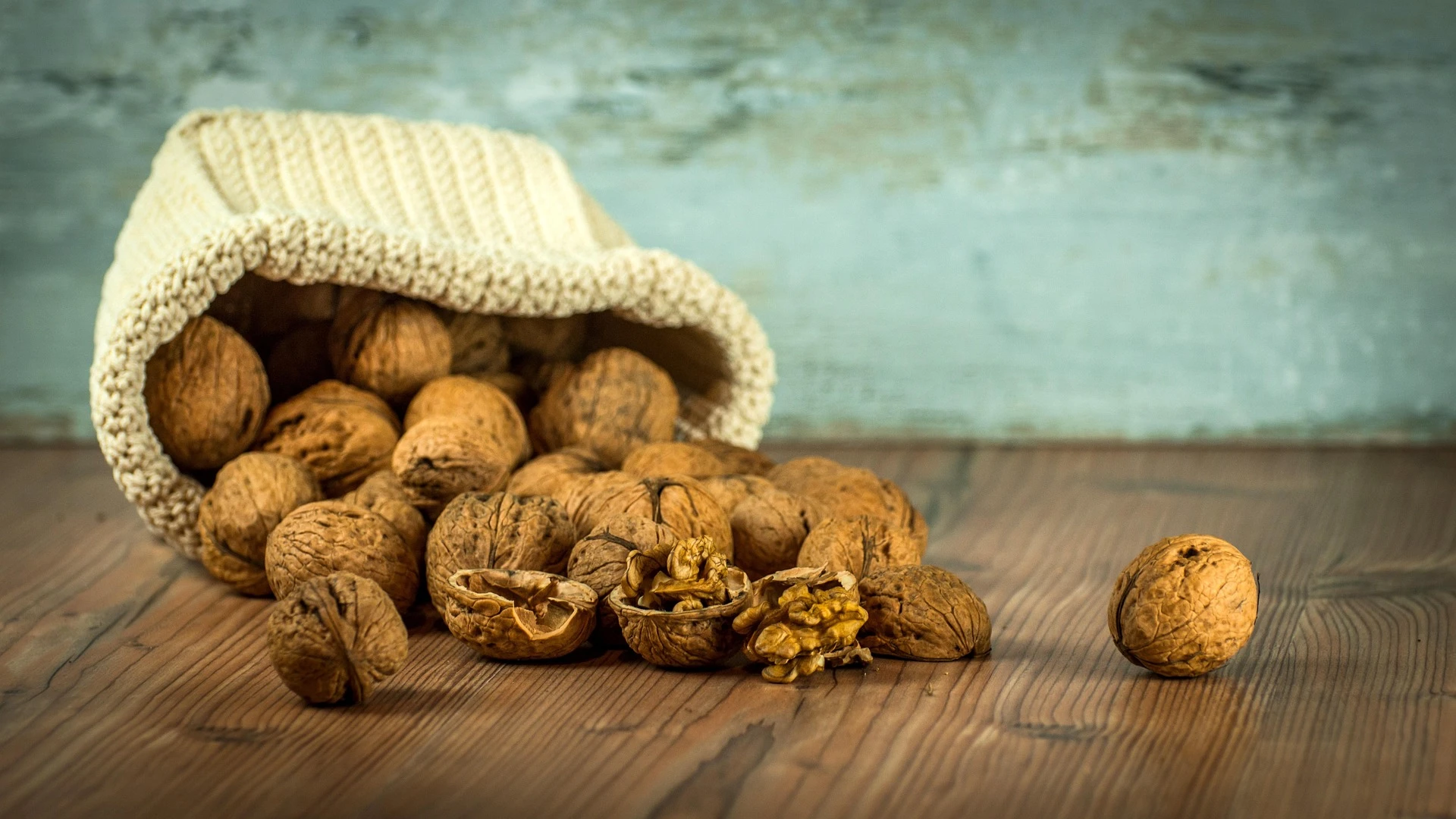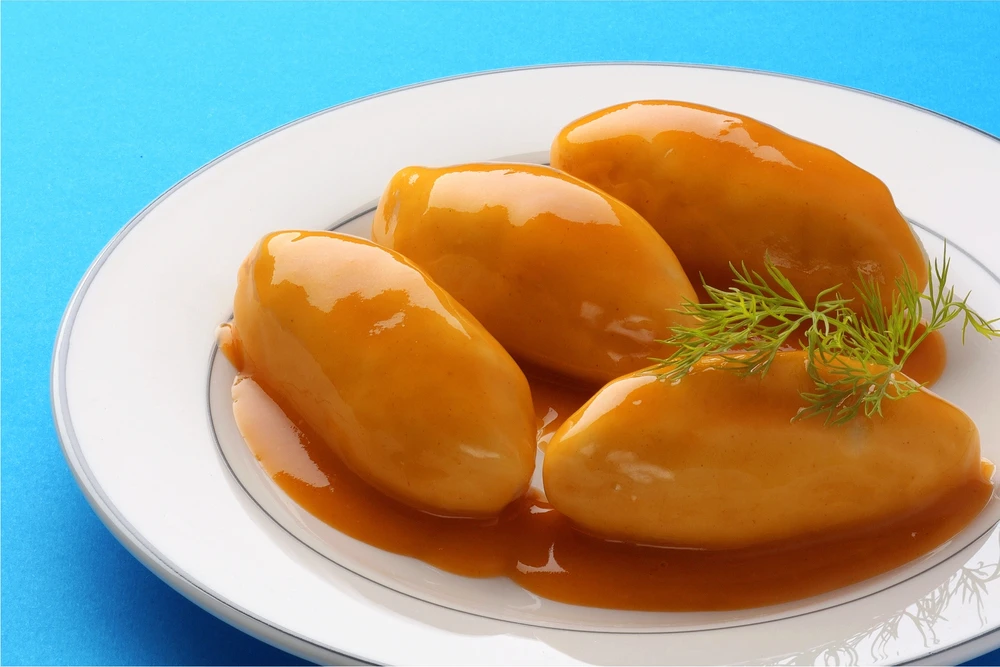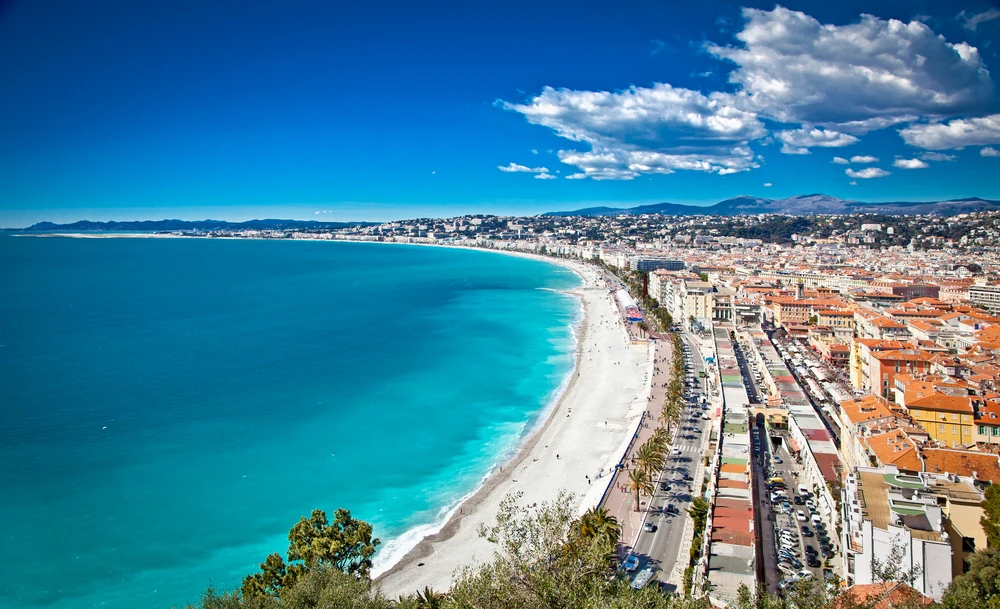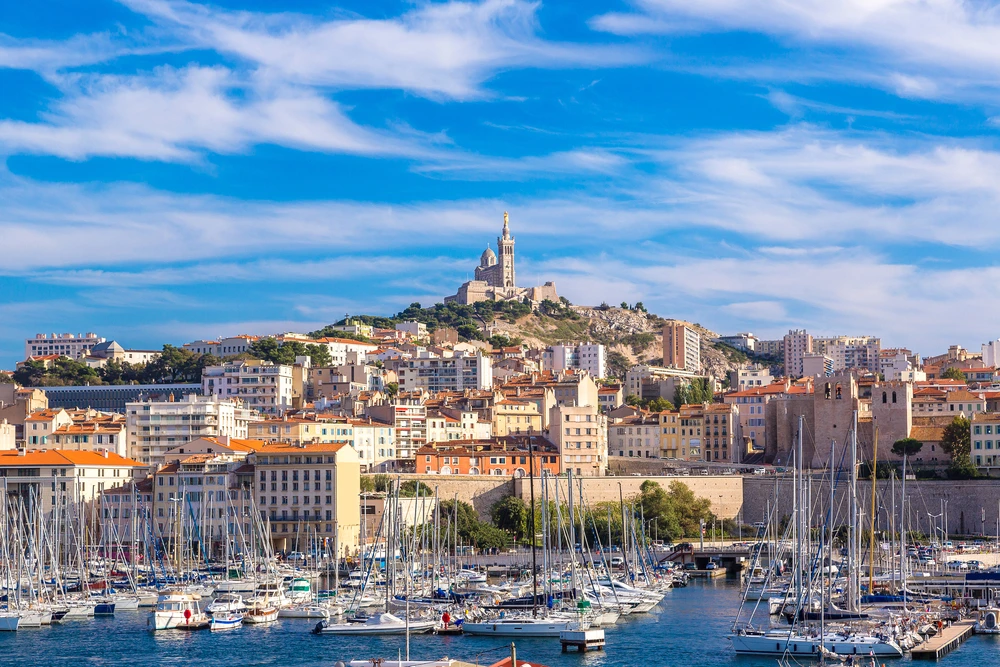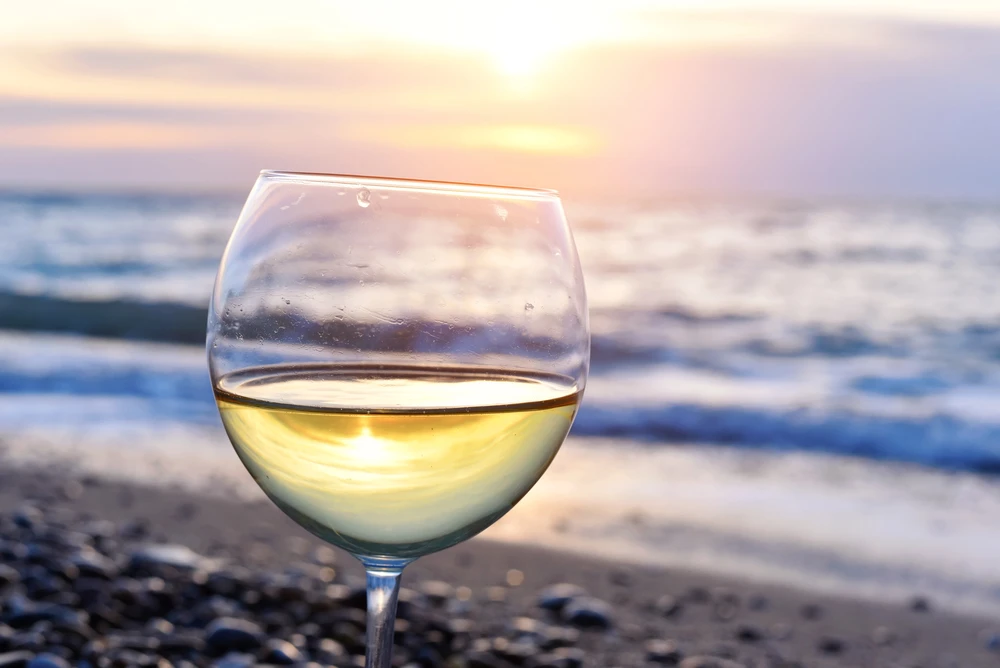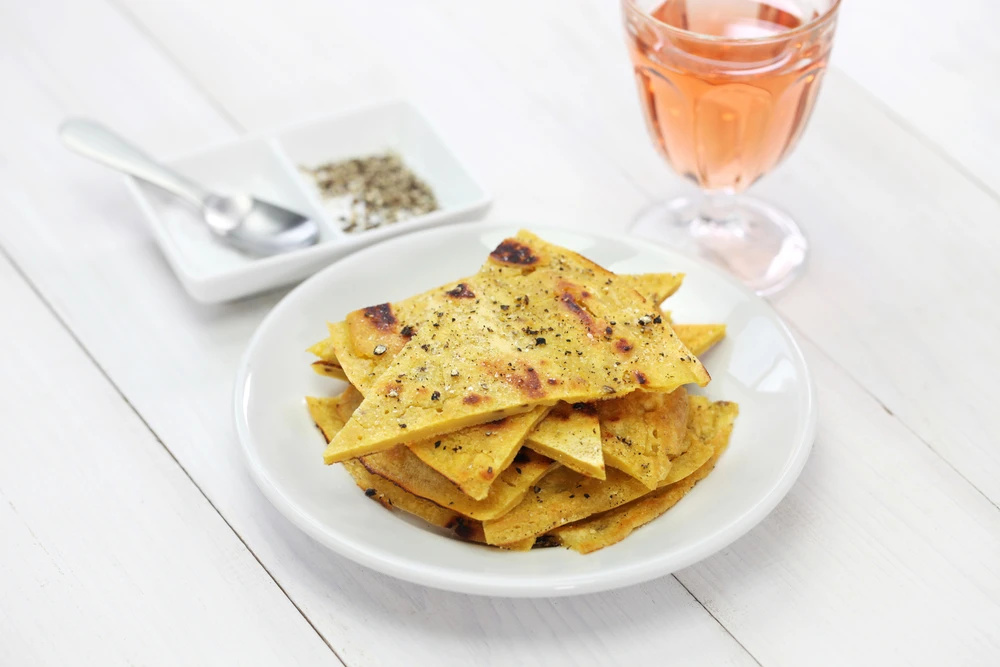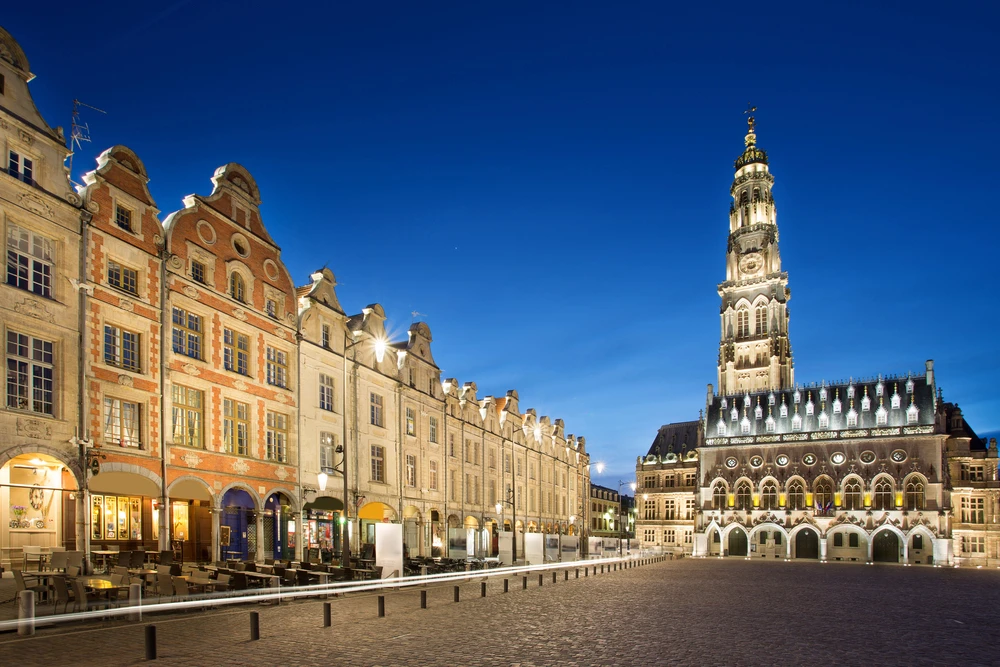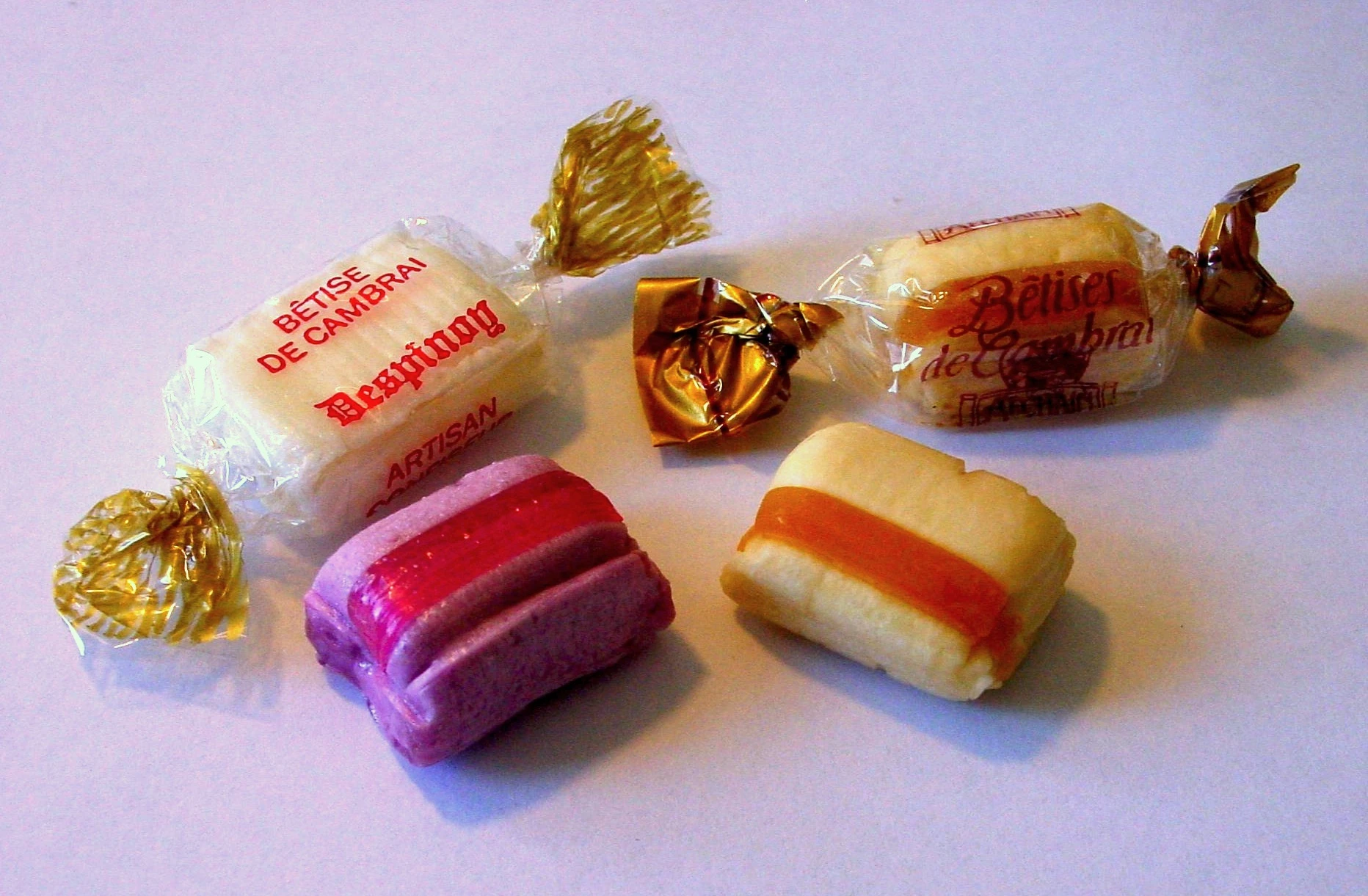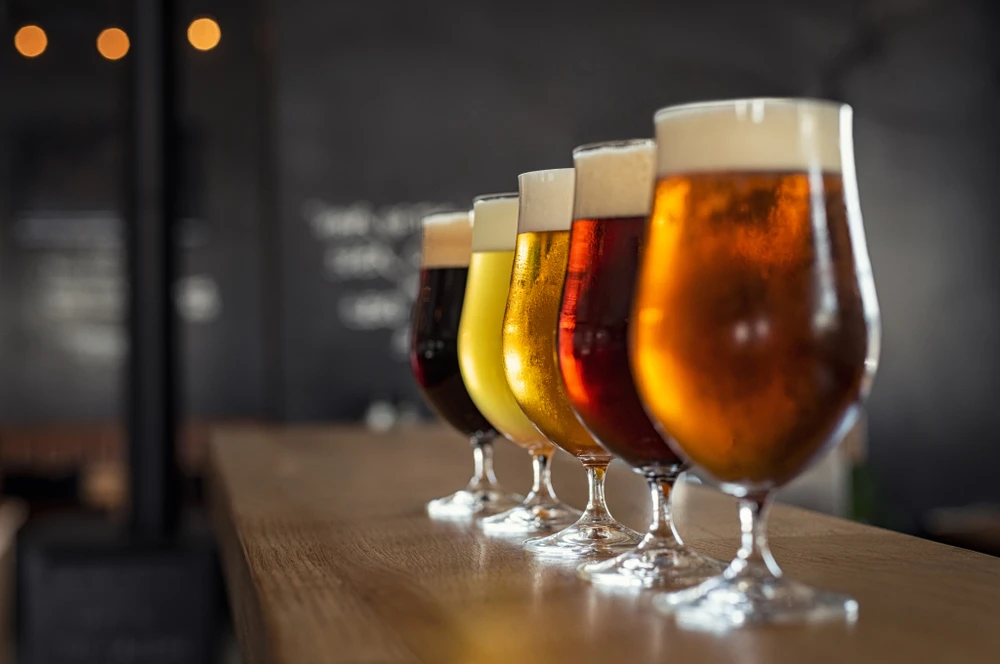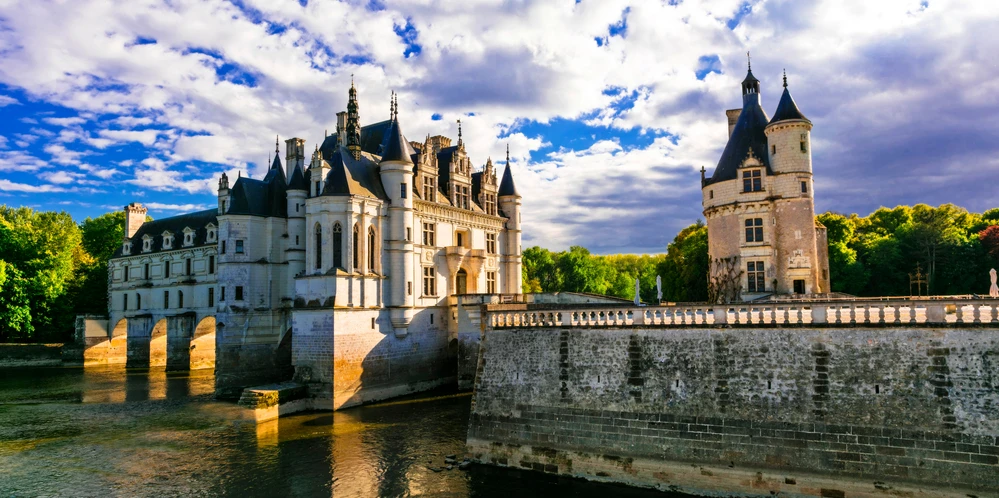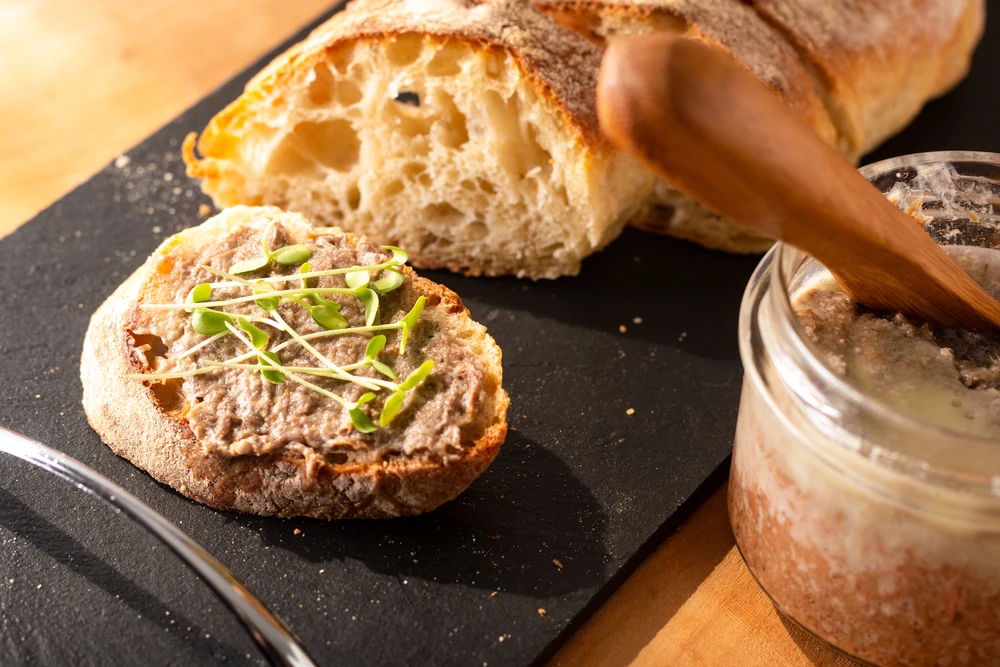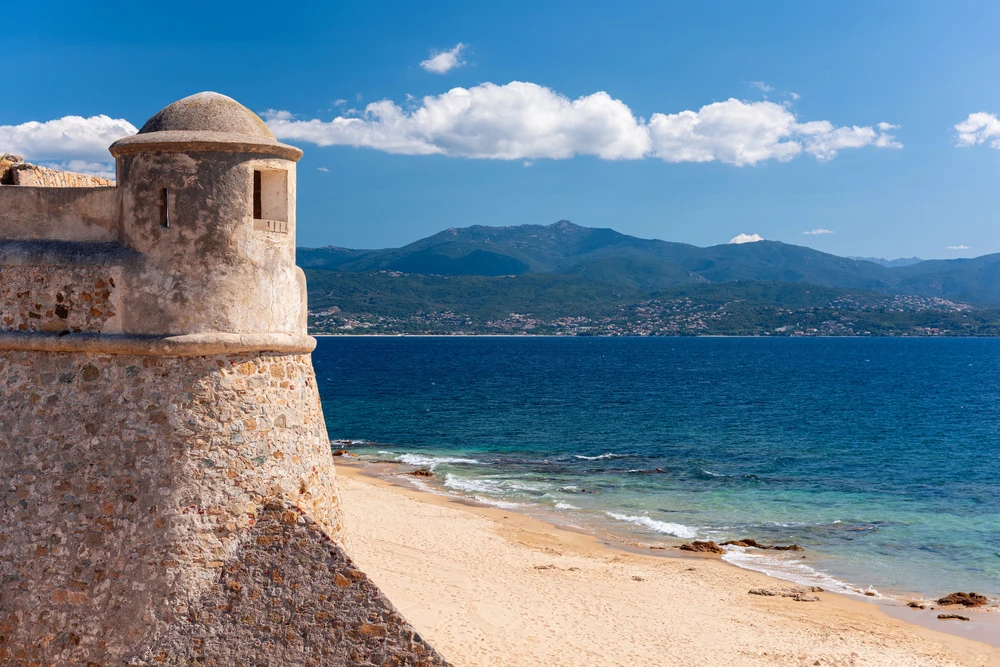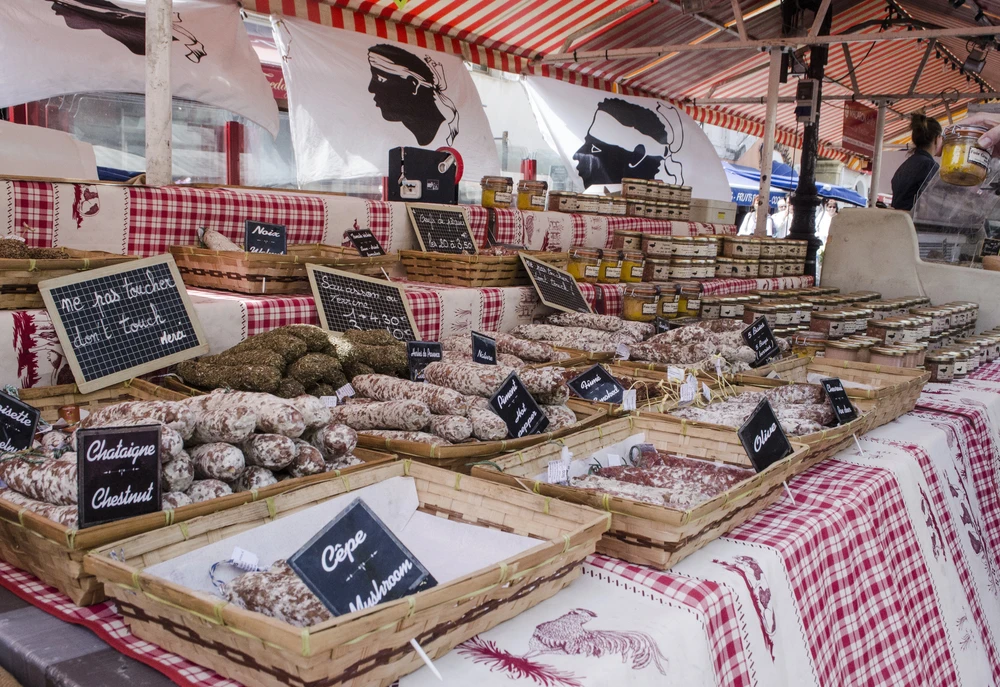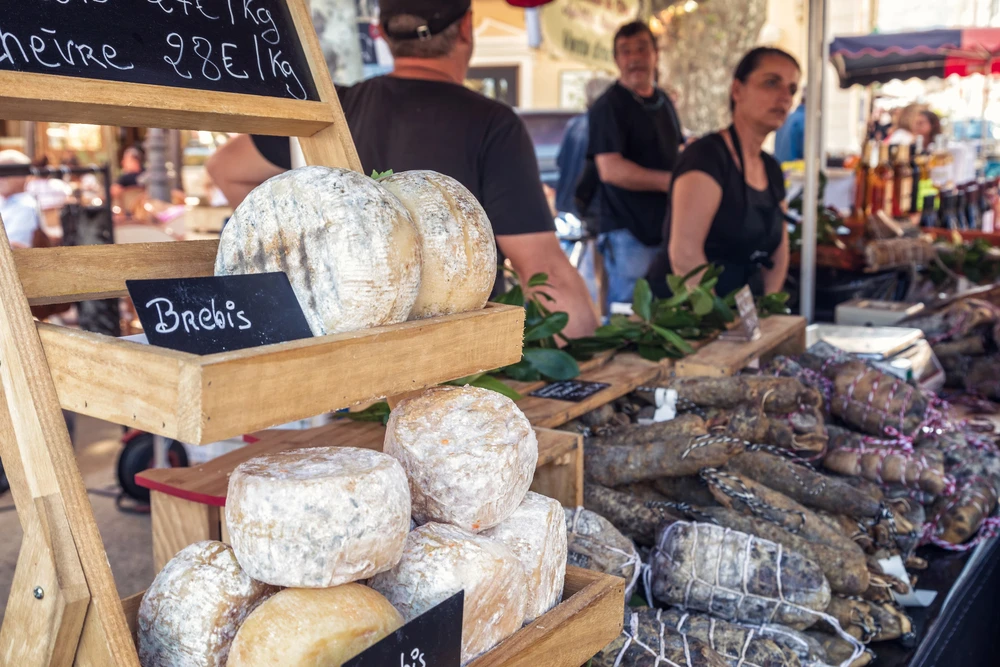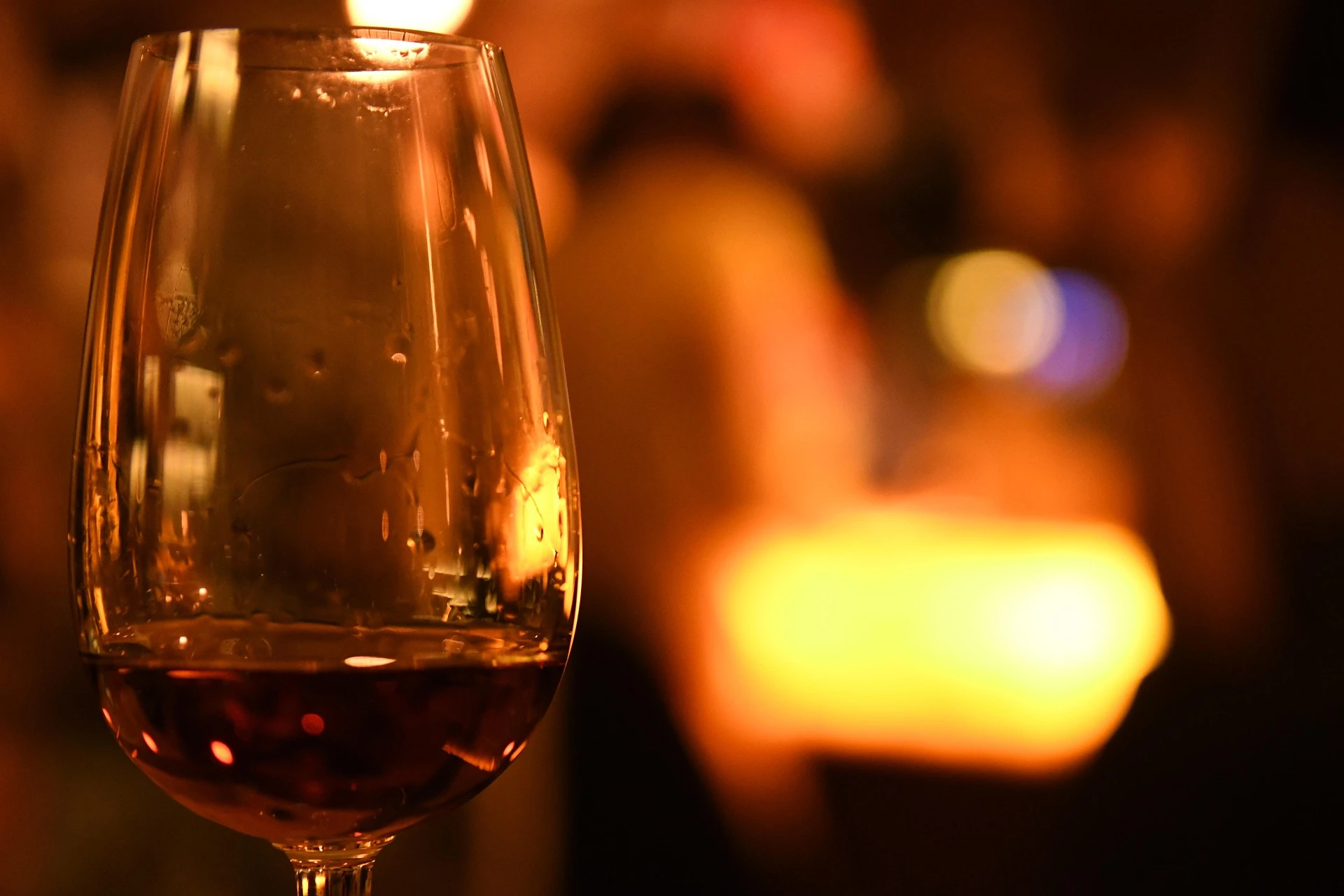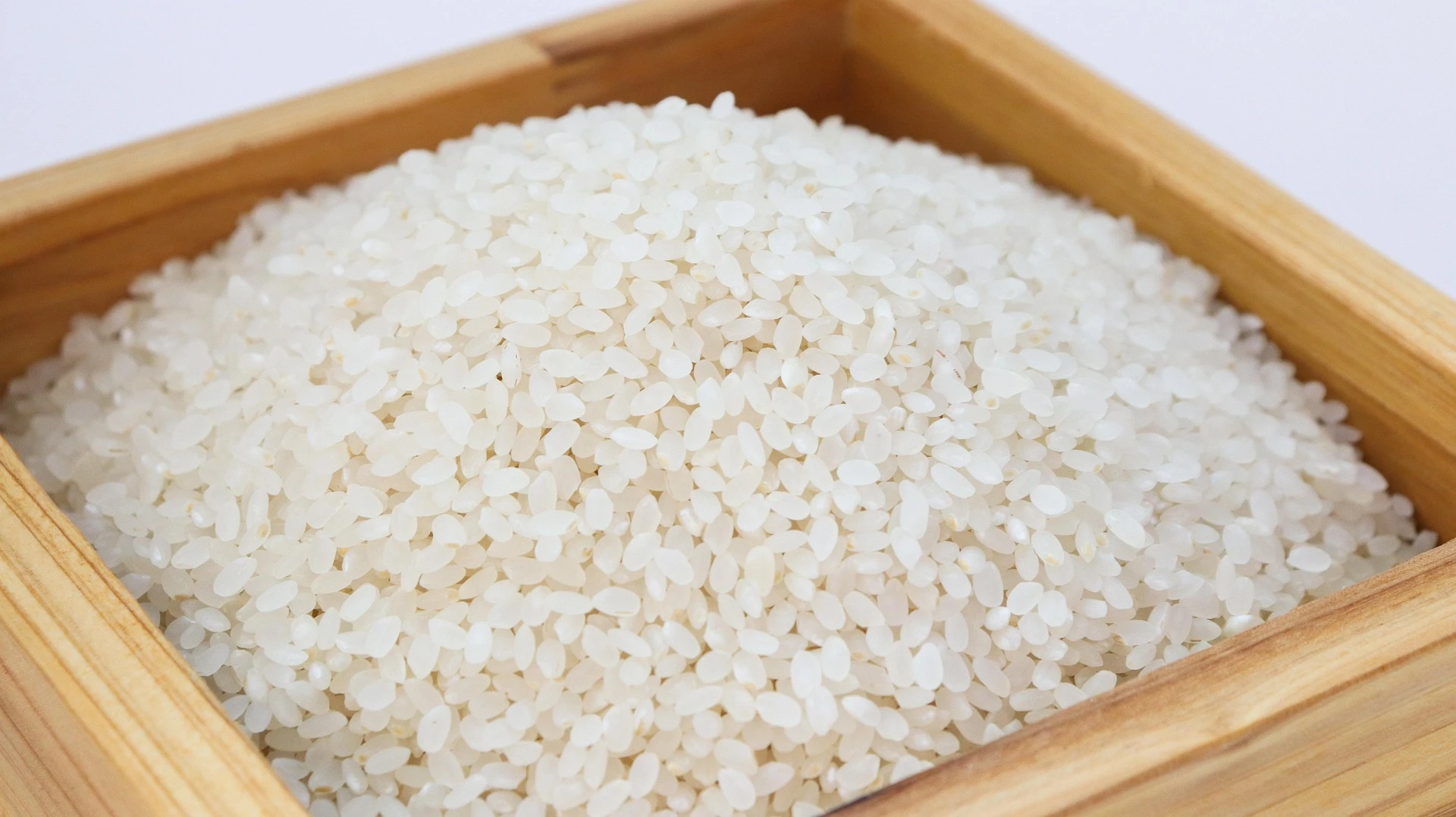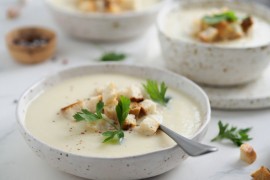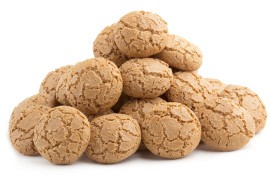🥖 Grand Est: a cradle of French regional specialties
The famous Smiling Angel from Reims Cathedral Photo by Joaquin Ossorio Castillo/shutterstock/Shutterstock
The Grand Est region is a mecca for French culinary specialties. It marries the finesse of Lorraine, the power of Champagne and the conviviality of Alsace. Here, every town is a gastronomic town of France, offering its share of sweet treats or generous dishes. Let's set off on a veritable tour de France des saveurs in the heart of the East.
Nancy – Bergamot and Macarons
Bergamotes de Nancy/ Photo chosen by Monsieurdefrance.fr: Foodpictures/shutterstock.com
In Nancy, gourmandise is expressed in refined confections. The bergamote de Nancy, created in the XIXᵉ century, is a translucent candy scented with bergamot essence imported from Italy. Behind its small size lies a powerful fragrance, both lemony and floral, that explodes on the palate. Since 1996, bergamot has had a PGI label, proof of its roots in the heritage of Lorraine. It embodies one of France's finest regional specialties.
Another point of pride: the macarons de Nancy. Nothing to do with their colorful Parisian cousins. Here, they're fluffy little galettes, made with almonds, sugar and egg whites. Their origins date back to 1793, when two Benedictine nuns, refugees in Nancy after the Revolution, perfected the recipe. They are still known today as "Les Sœurs Macarons". Their subtle fragrance and tender texture make them an icon of pâtisserie lorraine.
Macarons de NancyPhoto chosen by Monsieurdefrance.fr: Foodpictures/Shutterstock.com
At the table, we like to accompany these sweets with a white Moselle wine or a glass of gris de Toul, both fruity and light. A delicate marriage between sugar and wine, a reflection of Lorraine's elegance.
Reims - Pink cookie and Champagne
Des biscuits roses de Reims / Photo par barmalini/Shutterstock
In Reims, culinary heritage is inseparable from celebrations. The biscuit rose de Reims, which appeared in the XVIIᵉ century, wasn't invented for champagne, but it soon became its favorite companion. Crunchy, slightly sweet and scented with vanilla, it owes its color to the cochineal once used to color it. It can be eaten on its own, but shines brightest when dipped in a glass of sparkling wine. Because in Reims, it's impossible to miss champagne. An effervescent wine born in Champagne cellars in the XVIIᵉ century, it has established itself as the drink of kings, and then of great celebrations around the world. Champagne houses, with their vaulted cellars and kilometers of galleries, are now at the heart of the tourist offer. The union of the biscuit rose and champagne perfectly embodies the voyage gourmand en France: a sweet bite, a sparkling sip, and that's all Champagne refinement.
Champagne! You're in Reims Photo by RossHelen/shutterstock/Shutterstock
Strasbourg - Sauerkraut and Kougelhopf
Choucroute garnie / Photo chosen by Monsieur de France: depositphotos
In Strasbourg, the capital of Alsace, two symbols dominate the table: the choucroute garnie and the kougelhopf. The choucroute is a convivial, warm dish, whose powerful smells recall the winters of Alsace. Its secret? Finely chopped cabbage, fermented in brine, accompanied by a variety of cold meats: sausages, hams, smoked brisket. This medieval peasant dish has become an emblem of the region. Today, it is served in winstubs (Alsatian inns) and goes perfectly with a mug of Alsatian beer or a dry white wine such as Riesling.
We love kougelhopf at Christmas in particular / Photo chosen by monsieurdefrance.com : by Didier from Pixabay
The kougelhopf, on the other hand, is a leavened, honeycombed brioche scented with orange blossom water and topped with raisins and almonds. Baked in a glazed earthenware mold, it has taken pride of place on festive tables since the XVIIIᵉ century. Soft and golden, it goes equally well with a coffee or a glass of crémant d'Alsace. These two dishes demonstrate the richness of French regional dishes, when terroir and tradition unite.
Colmar - Tarte flambée and Alsace wines
In Colmar, capital of Alsace wines, we share the tarte flambée (flammekueche). Born in the countryside, it was once used to test the temperature of bread ovens. A thin pastry, topped with cream, garnished with bacon and onions, cooked right in the flame. The result is an explosion of crispness and melt-in-the-mouth goodness, perfect for sharing with friends. Colmar is also renowned for its white Alsace wines, veritable gems of freshness and aroma: riesling, pinot gris, gewurztraminer. These wines are the perfect accompaniment to tarte flambée, but also to regional fish and cheeses. In this way, Colmar embodies both the conviviality of a peasant dish and the finesse of a viticulture renowned the world over.
🦪 Brittany: a gourmet voyage France between land and sea
One of Saint Malo's fortified islets: the Fort National at high tide/ Image by Thierry BEUVE de Pixabay
Rennes - Galette-saucisse and Cidre breton
In the streets of Rennes, in markets and around Roazhon Park alike, the smell of galette-saucisse has been wafting since the XIXᵉ century. This specialty is a simple but perfect match: a warm, thin and slightly crispy galette de sarrasin wrapped around a still-juicy grilled sausage. It's the dish of the people, artisans, students and supporters. It's eaten standing up, on the go, but always with relish.
A delicious galette saucisse typical of Upper Brittany / Photo chosen by Monsieur de France: Valérie Lanoe.
The galette-saucisse goes naturally with a bolée de cidre brut. In Brittany, cider is a heritage drink. Made from the fermentation of local apples, it can be sweet, brut or demi-sec. Breton producers perpetuate an ancient know-how dating back to the Middle Ages, making cider the essential ally of galettes and crêpes. Together, galette-saucisse and cider embody one of France's tastiest regional dishes, typical of that voyage gourmand France that is Brittany.
Saint-Malo – Kouign-amann
Butter, sugar, flour... Just three ingredients, and yet it's not simple to make Kouign Amann. Photo chosen by monsieurdefrance.com: Depositphotos.
The name literally means "butter cake" in Breton. The kouign-amann, invented in Douarnenez in 1860, quickly conquered all of Brittany, and in Saint-Malo in particular, it's on display in every bakery window. This cake is a true ode to Breton butter. Bread dough, butter and sugar are folded over and over in the manner of puff pastry. When baked, the sugar caramelizes, the butter impregnates each layer and the result is crisp, soft and melting all at once. It's a sensory experience: the buttery aroma fills the street, the crust crunches under the tooth, the inside melts in the mouth. Considered one of France's most gourmet culinary specialties, kouign-amann perfectly illustrates the richness of Breton French regional specialties.
Quimper - Breton pancakes and Cider
A Breton mother makes pancakes around 1900;
It's impossible to talk about Quimper without mentioning crêpes. Present since the XIIIᵉ century, they come in two families: froment crepes, sweet and golden, and sarrasin crepes, darker and saltier. In Quimper's crêperies, they're topped with salted butter, jam, chocolate or ham and cheese, and always accompanied by cidre breton. The gesture of the crêpier, spreading the batter in a circular motion on the bilig, the traditional cast-iron griddle, is a spectacle in itself. Light and thin, the crêpe embodies Breton hospitality and the conviviality of family meals. Thanks to this specialty, Quimper has established itself in the tour de France des saveurs as an unmissable stopover, linking peasant simplicity and universal gourmandise.
🌻 Burgundy-Franche-Comté: the kingdom of flavors and wines
Besançon - Saucisse de Morteau
The saucisse de Morteau, protected by an IGP, is one of France's most famous culinary specialties. Born in the Haut-Doubs region, it is smoked in tuyés, large traditional fireplaces where wood crackles gently. The smell of resin and embers slowly penetrates the meat, giving it that unique smoky flavor. In Besançon, capital of Franche-Comté, this sausage is enjoyed in winter, often served with steamed potatoes or lentils. It's the perfect embodiment of mountain cuisine: rustic, generous and nourishing. As a drink, enthusiasts like to pair it with a dry, powerful vin jaune du Jura, whose nutty, spicy notes blend perfectly with the smoky flavor of the sausage.
Genuine Morteau sausages / Photo chosen by Monsieur de France : CC BY-SA 3.0, https://commons.wikimedia.org/w/index.php?curid=948399
Dijon - Dijon mustard
As early as the XIVᵉ century, the city of Dijon became the capital of mustard. This condiment, made from crushed seeds and verjuice, was already regulated by the Dukes of Burgundy. Even today, although production is no longer exclusively local, the name Dijon mustard evokes a piquant, refined taste the world over. Mustard accompanies emblematic dishes such as lapin à la moutarde or grillades, but it also spices up the sauces of modern chefs. In the mustard cellars, visitors discover ranges from the mildest to the most fiery, illustrating the diversity of French regional specialties.
Drink-wise, it pairs perfectly with a glass of Burgundy pinot noir, a noble, fruity grape variety.
A jar of mustard will always be offered in the "nef" what we arrange in the center of a restaurant table with salt and pepper (and sometimes oil). Photo chosen by monsieurdefrance.com depositphotos
Beaune - Œufs en meurette and Burgundy wines
In Beaune, capital of Burgundy wines, we celebrate the alliance of vine and cuisine with œufs en meurette. The recipe: poached eggs, topped with a red wine sauce simmered with lardons, onions and mushrooms. Each bite combines the creaminess of the egg with the full-bodied flavor of the wine.
A bistro dish par excellence, oeufs en meurette are a perfect example of those French regional dishes that have managed to retain their authenticity while seducing gourmets. Of course, it's impossible to enjoy them without a glass of red Burgundy. Here, pinot noir and gamay offer a divine marriage with the sauce, in an experience that sums up the voyage gourmand France all by itself.
🌊 Normandy: between cider, sea and bocage
Apple trees in bloom somewhere in Normandy. Photo chosen by monsieurdefrance.com via depositphotos
Caen - Tripes à la mode de Caen and Calvados
The town of Caen has given its name to one of Normandy's most emblematic dishes: tripes à la mode de Caen. It's a long-simmered stew of beef bellies, sometimes beef feet, onions, carrots and aromatics, all washed down with cider and sometimes calvados. It's often cooked for over 12 hours in a closed stoneware terrine, so that the flavors concentrate. This peasant dish, attested as far back as the Middle Ages, was codified in the XIXᵉ century by Prosper Montagné, a great French chef. Served piping hot, accompanied by country bread, it embodies the power of Norman cuisine. When it comes to drinks, it's impossible to pass up cider and also calvados, the apple brandy that symbolizes the region. It warms up and prolongs the tasting of this robust dish.
Rouen - Rouen-style duck
The canard à la rouennaise, or "duck with blood", is a noble dish invented in the XIXᵉ century. The recipe involves roasting the duck, then pressing it in a silver press to extract the blood. This is then incorporated into a full-bodied red wine sauce, which coats the meat. A festive dish, it is enjoyed in the great brasseries of Rouen and remains associated with luxury and bourgeois gastronomy. Its spectacular preparation still attracts the curious today, fascinated by the ceremonial press. This refined dish goes well with a verre de cidre brut. A dish that wonderfully illustrates the wealth of French culinary specialties.
Dieppe – Marmite dieppoise
A port facing the English Channel, Dieppe gave birth to marmite dieppoise, a fish and seafood soup. Cod, sole, scallops and shrimp simmer in it with white wine, cream and butter, forming a rich, fragrant broth. A fisherman's dish turned refined delicacy, it recalls the proximity of the sea and the abundance of maritime resources. Marmite dieppoise is served steaming hot, with toasted bread and salted butter. It is naturally accompanied by a dry white wine from Normandy, which enhances the iodized flavor of the dish.
A scallop in close-up. It's one of the ingredients of the Dieppoise marmite / Photo chosen by monsieurdefrance.com: rixipix via depositphotos.
🍷 Nouvelle-Aquitaine: between vineyards, sea and terroirs
Surfing is the Basque country's other national sport / Photo chosen by monsieurdefrance.com: depositphotos
Bayonne - Bayonne Ham
In Bayonne, iodized Atlantic air and Salies-de-Béarn salt have been shaping Bayonne ham since the Middle Ages. Cured for long months, it reveals a delicate, melting texture, with a taste balanced between saltiness and sweetness. It's one of Europe's oldest hams, exported as far back as the XVIᵉ century. Even today, it is celebrated at the famous "ham fair". It's best enjoyed in thin slices, accompanied by a Basque red wine like irouléguy, or even a glass of local cider. A must for the tour de France des saveurs.
Slices of the famous Bayonne ham / Photo chosen by monsieurdefrance.com : victor_palych via depositphotos
Bordeaux - Cannelé and Bordeaux wines
Des cannelés de Bordeaux / Photo chosen by Monsieur de France: depositphotos
It's impossible to talk about Bordeaux without mentioning the cannelé. Born in the XVIIIᵉ century, this little cake is golden on the outside and soft on the inside, and flavored with rum and vanilla. Legend has it that the Bordeaux cellars, using egg whites to clarify wines, left the yolks to the nuns who invented this sweet treat. Its caramelized aroma fills the streets of Bordeaux, and it's best accompanied by a coffee or a glass of sweet sauternes. But Bordeaux is also the kingdom of red wine: Médoc, Saint-Émilion, Pomerol... world-famous crus that illustrate the region's role in overseas and international gastronomy.
Limoges – Clafoutis
In the Limousin, the king dessert is clafoutis. Simple black cherries dipped in a flan-like pastry, and baked until lightly caramelized. This rustic dessert conquered French tables as early as the XIXᵉ century. The cherry juice permeates the pastry, offering a combination of melt-in-the-mouth and fruitiness. Enjoy it warm, dusted with powdered sugar, sometimes accompanied by a glass of light country wine, which emphasizes its fruity side.
A successful clafoutis / photo by Anastasia_Panait/Shutterstock.com
Poitiers - Farci poitevin
The farci poitevin is a unique vegetable terrine, composed of fresh herbs (sorrel, nettles, leeks, spinach) mixed with vegetables and sometimes a little meat, all wrapped in pork crépine. This medieval recipe, which originated in the countryside, epitomizes thrifty, tasty peasant cooking. Even today, it remains a festive dish in the Poitou region. Served cold or warm, it's best enjoyed with bread and a glass of dry white wine from Haut-Poitou.
La Rochelle - Mouclade charentaise
Moules marinières with a little parsley. Photo chosen by Monsieur de France : Kasza via dépositphotos.
In La Rochelle, the sea inspires the cuisine. The mouclade charentaise is a dish of mussels topped with a creamy sauce, flavored with curry and white wine. A bold marriage between local tradition and the influence of spices brought in from the ports. Creamy, fragrant and iodized, mouclade sums up the maritime richness of the Charente. Enjoy it with a glass of pineau des Charentes, a sweet, fruity muté wine.
🍊 Occitanie: sun, terroir and conviviality
The upper town of Carcassonne. Photo chosen by monsieurdefrance.com: via depositphotos.
Castelnaudary – Cassoulet
The cassoulet is much more than a dish: it's a culinary legend. In Castelnaudary, considered its birthplace, it's prepared in a large terracotta cassole, from which it takes its name. In it, white beans, duck confit, pork sausage, shank and sometimes mutton are simmered. The secret lies in the slow cooking process, which lasts several hours until a golden crust is formed that must be broken and reformed several times. This peasant dish, which has become a symbol of the South-West, perfectly illustrates the spirit of the region: generous, nourishing and convivial. It goes ideally with a full-bodied, well-structured red Languedoc wine.
A dish of cassoulet / Photo chosen by monsieurdefrance.com studioM via depositphotos
Nîmes - Brande de morue
In Nîmes, brandade de morue is a refined specialty. It consists of dried and desalted cod, pounded at length with olive oil, milk and sometimes garlic, until a smooth purée is obtained.
This dish originated in the XVIᵉ century, thanks to the maritime trade that enabled cod to be imported from the Atlantic and the Mediterranean. Brandade has become a mainstay on Nîmes tables, a symbol of Mediterranean heritage.
It's best enjoyed warm, sometimes au gratin in the oven, and pairs well with a dry white wine from the Gard, which balances the richness of the olive oil and fish.
A good dish that stalls well: brandade de morue / Photo chosen by Monsieur de France; depositphotos
Perpignan - Boles de picolat
In Perpignan, we find the Catalan influence with boles de picolat. These are beef or pork meatballs simmered with green olives, tomatoes and white beans.
It's a simple, rustic dish, but deeply rooted in the identity of Roussillon. Perpignan families still prepare it for festive meals, recalling the close ties between French and Spanish cuisine.
It goes well with a Roussillon red wine, powerful and sunny, which emphasizes the Mediterranean flavors.
Toulouse - Cassoulet toulousain and Saucisse de Toulouse
While Castelnaudary claims the paternity of cassoulet, Toulouse also has its version. Here, the dish is enriched with saucisse de Toulouse, a fresh, meaty charcuterie with a subtle, spicy flavor. This sausage, attested as early as the XVIIIᵉ century, is prepared with pork, salt, pepper and nothing else, making it a product of great authenticity. The saucisse de Toulouse is also served on its own, grilled, with lentils or potatoes. It embodies the simplicity and generosity of the Toulouse terroir. As for cassoulet toulousain, richer in meats, it reflects the gourmandise of a gastronomic city of France proud of its traditions. As a beverage, we prefer a cahors rouge, a dark, powerful wine, the ideal companion for simmered dishes.
Toulouse sausages go well with many dishes / Photo chosen by Monsieur de France: depositphotos
🥔 Auvergne-Rhône-Alpes: gourmet mountains and capital of gastronomy
The volcanoes of Auvergne are classified UNESCO / Photo chosen by Monsieurdefrance.com : PantherMediaSeller via depositphotos
Clermont-Ferrand – Truffade
In the heart of Auvergne, truffade is the peasant dish par excellence. Made with potatoes browned in a pan and bound with fresh tome, it melts and flies off the plate. A comforting winter dish, it has fed generations of shepherds in the Auvergne mountains. Its simplicity hides an intensity: the crispness of the potatoes meets the softness of the cheese. Truffade is still served today in the inns and restaurants of Clermont-Ferrand, accompanied by local charcuterie such as Auvergne ham. As a drink, we prefer a light red Cantal wine or a côte d'Auvergne.
Grenoble - Noix de Grenoble
A symbol of the Alpine valleys, the noix de Grenoble was the first fruit to be awarded a PDO in France, in 1938. Cultivated since ancient times, it's renowned for its crunchy, sweet yet slightly bitter taste. It is eaten plain, but can also be used in a wide range of recipes: salads, pastries, cheeses and special breads. In Grenoble, walnuts are everywhere: in markets, in bakeries, and even in museums celebrating their history. It pairs wonderfully with goat's cheese, mountain honey or a glass of vin de Savoie blanc, which brings out its flavors to the full.
The walnut is Grenoble's specialty / Photo chosen by monsieurdefrance.com : by Lubos Houska from Pixabay
Lyon - Quenelle and Cervelle de canut
Lyon is universally recognized as the capital of French culinary specialties. Two dishes epitomize its reputation: the quenelle de brochet and the cervelle de canut. The long, fluffy quenelle is a mixture of pike meat, breadcrumbs and butter, topped with a creamy, crayfish-flavored Nantua sauce. It's a bourgeois dish from the XIXᵉ century, still served in the famous bouchons lyonnais. The cervelle de canut, despite its intriguing name, is a preparation of fresh cheese beaten with herbs, garlic and oil. A simple dish, born among the canuts (weavers) in the XIXᵉ century, it epitomizes popular, fresh and convivial cuisine. Both dishes are best enjoyed with a beaujolais rouge or a côtes-du-rhône blanc, perfect for highlighting their richness.
Des quenelles / Photo chosen by Monsieur de France: depositphotos
Saint-Étienne - Râpée stéphanoise
The râpée, a specialty of Saint-Étienne, is a grated potato pancake, pan-fried in oil or butter. Crunchy on the outside, melt-in-the-mouth on the inside, it's served warm with a salad or charcuterie. A simple, popular dish, it's reminiscent of working-class and family cooking, friendly and accessible. Even today, restaurants in Saint-Etienne honor it as a local pride. As a drink, it's best paired with a côte du Forez rouge, a light, fruity wine.
🍊 Provence-Alpes-Côte d'Azur: sun, sea and southern cuisine
Nice and the Bay of Angels / photo by Aleksandar Todorovic/Shutterstock.com
Avignon - Papaline d'Avignon
In Avignon, the most famous sweet is the papaline, created in 1960. This pink chocolate filled with oregano liqueur (the "liqueur of the popes") pays tribute to the city's pontifical past. Its crunchy shell gives way to a surprisingly fragrant cream, combining bitterness and sweetness.
Today, papaline has become the quintessential gourmet souvenir for visitors, along with the wines of Châteauneuf-du-Pape, a prestigious nearby vineyard that illustrates the importance of beverages in this voyage gourmand France.
Marseille - Bouillabaisse
Marseille: the old port and the Bonne MèrePhoto by Sergii Figurnyi/Shutterstock.fr
The bouillabaisse is the totem dish of Marseille. Born in fishermen's boats, it consisted of accommodating unsold fish, such as scorpion fish or conger eel, simmered with tomatoes, garlic and saffron. In the XIXᵉ century, it was refined and became the city's culinary icon. Served piping hot, accompanied by croutons rubbed with garlic and topped with rouille, it exudes spicy, marine flavors. Every spoonful is an immersion in the Mediterranean. On the beverage side, a white wine from Cassis or Bandol sublimates its iodized flavors.
Nice - Socca and Salade niçoise
In Nice, the local street food is called socca: a thin galette of chickpea flour, baked in large wood-fired ovens. Crunchy on the edges, soft in the center, it's eaten piping hot in the markets of Old Nice, often with a glass of rosé de Provence. The salade niçoise, meanwhile, is a hymn to the Mediterranean. Composed of tomatoes, anchovies, eggs, olives and olive oil, it is attested as early as the XIXᵉ century. Fresh, colorful, it illustrates the generosity of the French culinary specialties of the South.*
Une socca / photo par bonchan/Shutterstock.com
Toulon - Cade toulonnaise
Less well-known than Niçoise socca, cade is Toulon's street specialty. This thick chickpea-flour galette, baked in large ovens, is eaten hot, sprinkled with salt. It's softer than socca, but just as tasty.
Its origins date back to the XIXᵉ century, when bakers introduced it as an economical and nourishing food. Today, it can still be found in a few traditional addresses, where it is eaten on the go, as a link between the port, the sailors and the city.
🧁 Hauts-de-France: between estaminets and Northern sweets
The belfry and town hall of Arras / Photo chosen by monsieurdefrance.com : perig76 via depositphotos
Amiens - Macaron d'Amiens
The macaron d'Amiens is a fluffy little wonder, quite different from its colorful Parisian cousins. Made with almonds, sugar, honey and egg whites, it has a dense, melting texture. Created in the XVIᵉ century, it already seduced Catherine de Médicis. Today, it can be found in all the city's patisseries, packed in pretty golden boxes. It's one of the French culinary specialties that has survived the centuries without losing its authenticity. With a cup of coffee or tea, it reveals all its deliciousness.
Arras - Cœurs d'Arras
The cœurs d'Arras are small, crunchy shortbread cookies flavored with caramel or vergeoise. Their heart shape is no accident: it symbolizes the inhabitants' attachment to their town. Created in the XIXᵉ century, they were sold at local fairs and festivals. Even today, they take pride of place in specialty stores, recalling the sweet charm of Artesian traditions. Simple, rustic, yet delicious, they perfectly represent the convivial spirit of the French regional specialties of the North.
Cambrai – Cambrai nonsense
Des bêtises de Cambrai / Photo chosen by Monsieur de France: By myself (Bernard Leprêtre) - Own work, CC BY-SA 2.5, https://commons.wikimedia.org/w/index.php?curid=1631222
Les bêtises de Cambrai are a delicious example of a mistake turned into a success. In the XIXᵉ century, an apprentice confectioner is said to have measured out a candy recipe incorrectly. The result? A translucent, mint-scented confection, both fresh and sweet. Now a veritable institution, they are still handmade by traditional confectioners like Afchain. Their name, "bêtises", is a reminder that even a mistake can become a culinary treasure. They're one of the best-known sweets in the tour de France des saveurs sucrées.
Lille - Maroilles pie and Northern beers
In the estaminets of Lille, the tarte au maroilles is king. On a leavened pastry, maroilles cheese is laid out, powerful in smell but surprisingly soft on the palate. When baked, it melts and imbues the whole tart with its flavor.
A medieval dish that has become a regional symbol, tarte au maroilles is often served with French fries or salad. It goes perfectly with a bière blonde du Nord, another local pride.
It's one of the French regional dishes with the strongest identity, rooted in a popular and festive culture.
🧄 Centre-Val de Loire: a cuisine of terroir and history
Chenonceau. Photo chosen by Monsieurdefrance.Com: mawgli via Depositphotos.
Orléans - Orléans vinegar
The historic capital of vinegar, Orléans built its reputation as early as the XVIᵉ century. Thanks to its position on the Loire River, wines arriving by boat and traveling badly were transformed into vinegar by specialized craftsmen known as "vinaigriers".This Orléans vinegar is obtained by slow fermentation in large oak barrels, giving it an incomparable aromatic richness. It's found in sauces, marinades, and was long exported as far away as the court of Versailles.Even today, Orléans know-how lives on. This vinegar is part of the tour de France des saveurs, discreet but essential, as it has been spicing up French cuisine for centuries.
Tours - Rillettes de Tours and Loire wines
The rillettes de Tours are a convivial dish par excellence. It consists of pork meat cooked very slowly in its own fat, until a smooth, stringy paste is obtained. Already mentioned by Rabelais in the XVIᵉ century, they were present on every peasant and bourgeois table in Touraine.In Tours, they are still made according to tradition, with noble cuts of pork and long cooking. Spread on farmhouse bread, they literally melt in the mouth.They are ideally accompanied by a Loire wine: a red Chinon, fleshy and fruity, or a white Vouvray, fresh and mineral. These wine and charcuterie pairings embody all the richness of France's regional specialties.
Le Mans - Rillettes du Mans
There's nothing better than rillettes du Mans on fresh bread for a quick bite/ Photo chosen by Monsieur de France: dépositphotos
While Tours also lays claim to its rillettes, it's really Le Mans that has become synonymous with this gourmet delicacy. Born in the 15th century, rillettes du Mans were prepared to preserve pork. Slow cooking, sometimes for up to 10 hours, rendered the meat candied and melt-in-the-mouth, unraveling into fluffy fibers.The reputation of rillettes du Mans took hold in the XIXᵉ century, thanks to the great charcutier houses that made them an export product. Today, they are protected by a PGI. Their taste is lightly caramelized, with a deep aroma of candied meat.They go well with a light red wine from the Sarthe, but also with a glass of cidre fermier, recalling the region's dual Norman and Loire heritage.
🏝 Corsica: between mountains, sea and pastoral traditions
The Miollis citadel and its incredible view / Photo chosen by Monsieur de France: depositphotos
Ajaccio – Fiadone et charcuteries corses
The fiadone is the Corsican dessert par excellence. In Ajaccio, it's traditionally made for Easter, but can be enjoyed all year round. Its base? brocciu, fresh sheep's or goat's cheese, to which eggs, sugar and lemon zest are added. The result is a fresh, slightly tangy cake with an airy texture. It's best eaten cold, with a cup of coffee or a local Muscat. But Ajaccio is also home to the great Corsican sausages: coppa, lonzu, figatellu. The result of ancestral know-how, they are cured in the sea breeze and the fragrance of the maquis. The taste is smoky, powerful and sometimes enhanced by herbal aromas. These products embody island authenticity and the strength of French regional specialties from the mountains. To sublimate these flavors, choose a red wine from Sartène or a sparkling muscat from Ajaccio.
Corsica is a land of charcuterie / Photo chosen by Monsieur de France: depositphotos
Bastia – Canistrelli et fromages corses
In Bastia, it's impossible not to fall under the spell of canistrelli. These dry cookies, flavored with aniseed, white wine or lemon, are crunchy and crumbly. They originated in the Corsican countryside, where they accompanied peasant coffee, and have been handed down from generation to generation. Today, they exist in more modern versions, flavored with chocolate or almonds. The Bastia region is also proud of its Corsican cheeses: niulincu or casgiu merzu (fermented cheese, with a strong, pungent taste). These cheeses, made in mountain sheepfolds, are a reminder of the importance of pastoralism on the island. To accompany canistrelli and cheese, there's nothing like a sweet, fragrant muscat du Cap Corse, or a full-bodied red wine reminiscent of the maquis.
Corsican cheeses are very famous / Photo chosen by Monsieur de France: depositphotos
🌴 Overseas France: a rainbow of flavours
Image by Walkerssk from Pixabay
Fort-de-France (Martinique) - Colombo
In Fort-de-France, the signature dish is colombo, heir to Indian cuisine introduced in the XIXᵉ century. It's a Creole curry, prepared with meat (often chicken or goat), vegetables and a blend of bright yellow spices, including turmeric, coriander, fenugreek and cumin. Its bewitching aroma, spicy but not too pungent, illustrates the fusion of Martinican cultures. Served with rice, it embodies a culinary journey that goes beyond the plate: each bite tells the story of migrations and exchanges. As a drink, a ti-punch au rhum agricole often accompanies the colombo. Here, rum is much more than a drink: it's a living heritage, a symbol of Martinique.
Pointe-à-Pitre (Guadeloupe) - Bokit
The bokit is the star of Guadeloupe street food. This fried bread, born after the abolition of slavery, is a Creole adaptation of bread fritters. Filled with chicken, fish or vegetables, it's generous, crispy on the outside, soft on the inside. In Pointe-à-Pitre, it's sold in the streets, served piping hot, garnished as inspired. A popular and festive dish, it is one of the symbols of the French culinary specialties of overseas France, perfectly illustrating the creativity of the islands. Enjoy it with guava juice or rhum arrangé, flavored with vanilla or cinnamon.
Image by Bernhard Rohm from Pixabay
Saint-Denis (La Réunion) - Cari and Rougail
In La Réunion, two dishes epitomize Creole cuisine: the cari and the rougail. Curry is a spicy stew, prepared with chicken, fish or vegetables, simmered with tomatoes, garlic, onions and turmeric. Its intense aroma and rich sauce permeate the accompanying rice. The rougail, more condiment than dish, is a spicy preparation, often tomato- or sausage-based, that spices up Reunionese meals. One can't go without the other: curry and rougail form the essential duo on local tables. These dishes illustrate Overseas gastronomy, a fusion of Indian, Malagasy, African and European influences.
Rice is often featured in dishes in Saint Denis / Photo chosen by Monsieur de France : Image by ally j from Pixabay
Nouméa (New Caledonia) - Bougna
The bougna is the traditional Kanak dish. In Nouméa and throughout the territory, it is prepared for major festivals. The recipe involves wrapping meat, fish, yams, sweet potatoes and bananas in banana leaves. The whole thing is buried in a heated stone oven. The slow, steaming cooking allows the flavors to mingle: the smokiness of the earth, the vegetal fragrance of the leaves, the sweetness of the tubers, the power of the meats. Bougna is not just a dish, it's a ritual, a moment of communal sharing. It's often enjoyed with a local drink made from kava (prepared from a root) or locally brewed beers.
(Alcohol abuse is dangerous for your health, and should be consumed in moderation).


